Story and Photos by ITN European Reporter Herve’ Rebollo
Salut à toi American rider,
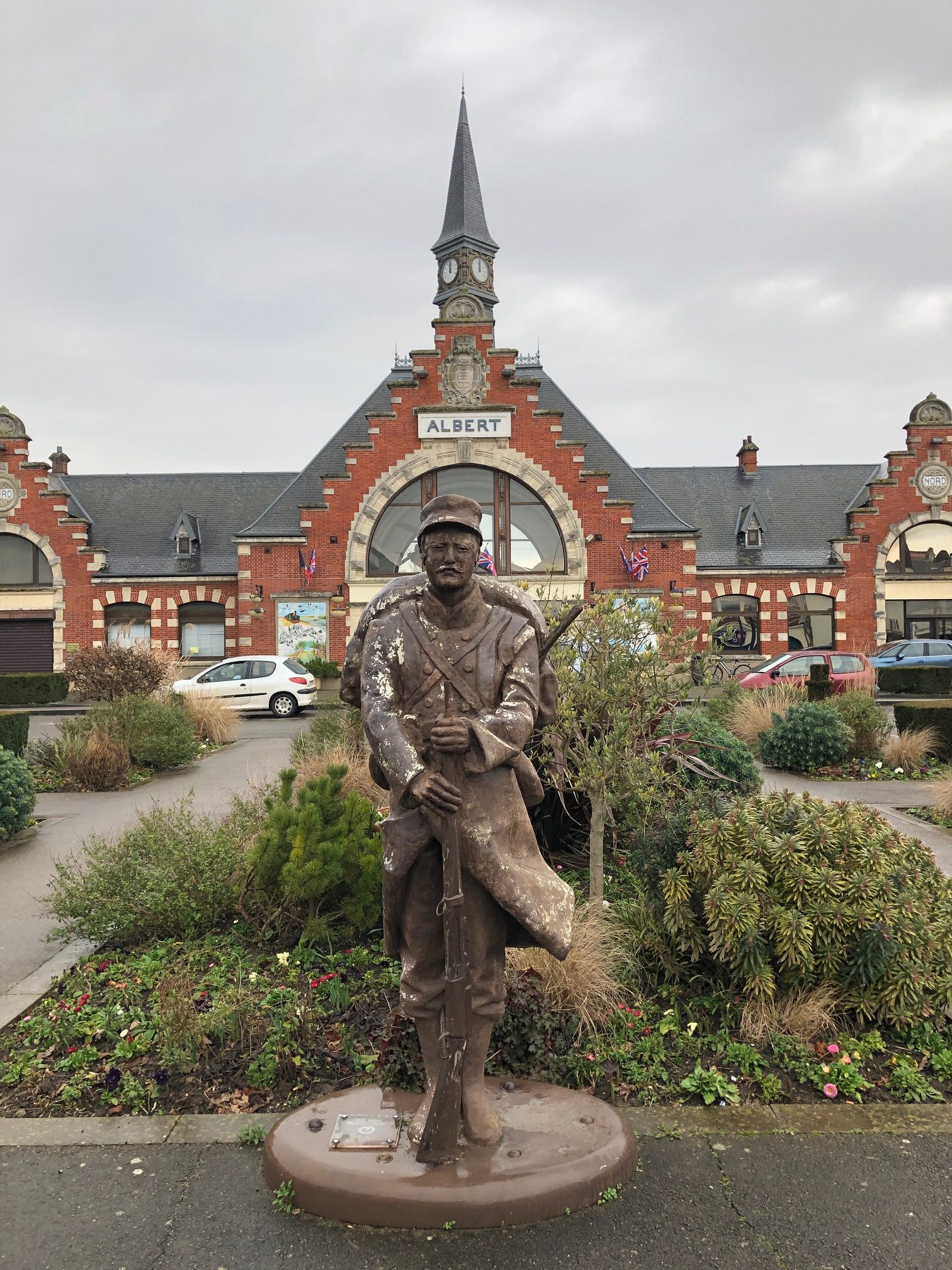 As you know it’s still winter season, we’re under curfew and I’m still a lone rider on the roads ‘cause it’s supposed to be to cold or slippery to ride a motorcycle they say …
As you know it’s still winter season, we’re under curfew and I’m still a lone rider on the roads ‘cause it’s supposed to be to cold or slippery to ride a motorcycle they say …
 Kiss my rear tire and come on, it’s time to discover something great and historical!
Kiss my rear tire and come on, it’s time to discover something great and historical!
Let’s go, it’s the perfect period (no sun, cold, windy and grey sky to pay tribute to the Braves and the Fallen of the place I’m going to make you discover) to see the sadly famous LOCHNAGAR CRATER.
 Saturday morning, yes, it’s really cold. Go North! It should be a 450 kilos round trip (280 miles), I must come back home before 6pm because of the winter nightfall (and maybe because I don’t want to get a ticket of 135€ / about 170$ for non-respect of the curfew).
Saturday morning, yes, it’s really cold. Go North! It should be a 450 kilos round trip (280 miles), I must come back home before 6pm because of the winter nightfall (and maybe because I don’t want to get a ticket of 135€ / about 170$ for non-respect of the curfew).
My target: the little city of ALBERT in the SOMME Valley, my first stage of the day.
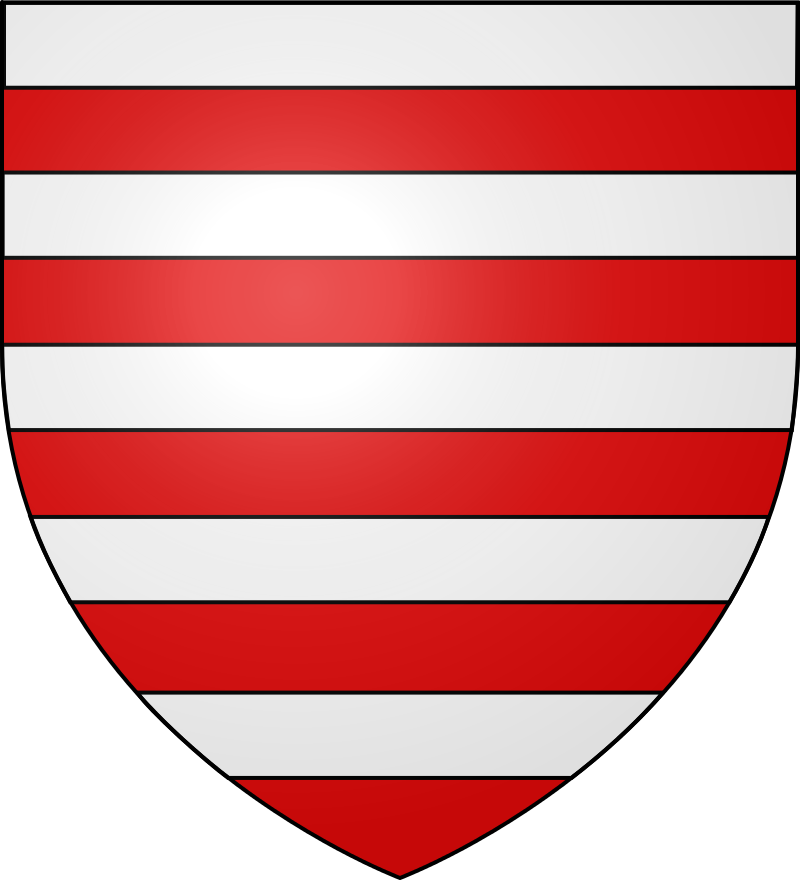 Albert was founded as a Roman outpost, in about 54 BC. After being known by various forms of the name of the local river, the Ancre, it was renamed to Albert after it passed to Charles Albert, duke of Luynes. It was a key location in the Battle of the Somme in World War I.
Albert was founded as a Roman outpost, in about 54 BC. After being known by various forms of the name of the local river, the Ancre, it was renamed to Albert after it passed to Charles Albert, duke of Luynes. It was a key location in the Battle of the Somme in World War I.
 When you arrive in this little provincial town, you immediately note that the WWI tourism is important for the town. Everywhere in towncenter you can find statues of soldiers of different corps (both allied and German).
When you arrive in this little provincial town, you immediately note that the WWI tourism is important for the town. Everywhere in towncenter you can find statues of soldiers of different corps (both allied and German).
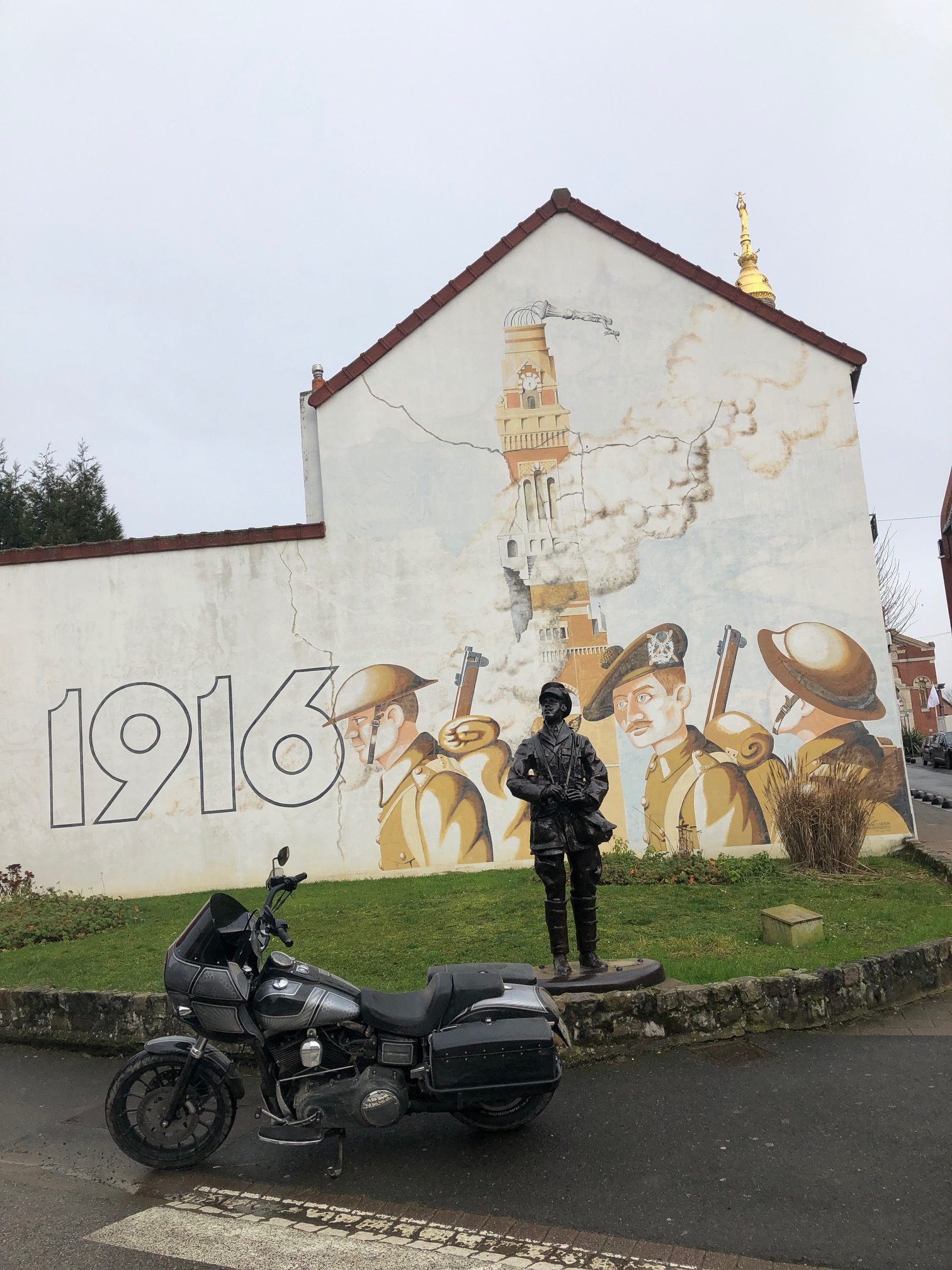 The destruction of Albert during the First World War was total : here the railway station.
The destruction of Albert during the First World War was total : here the railway station.
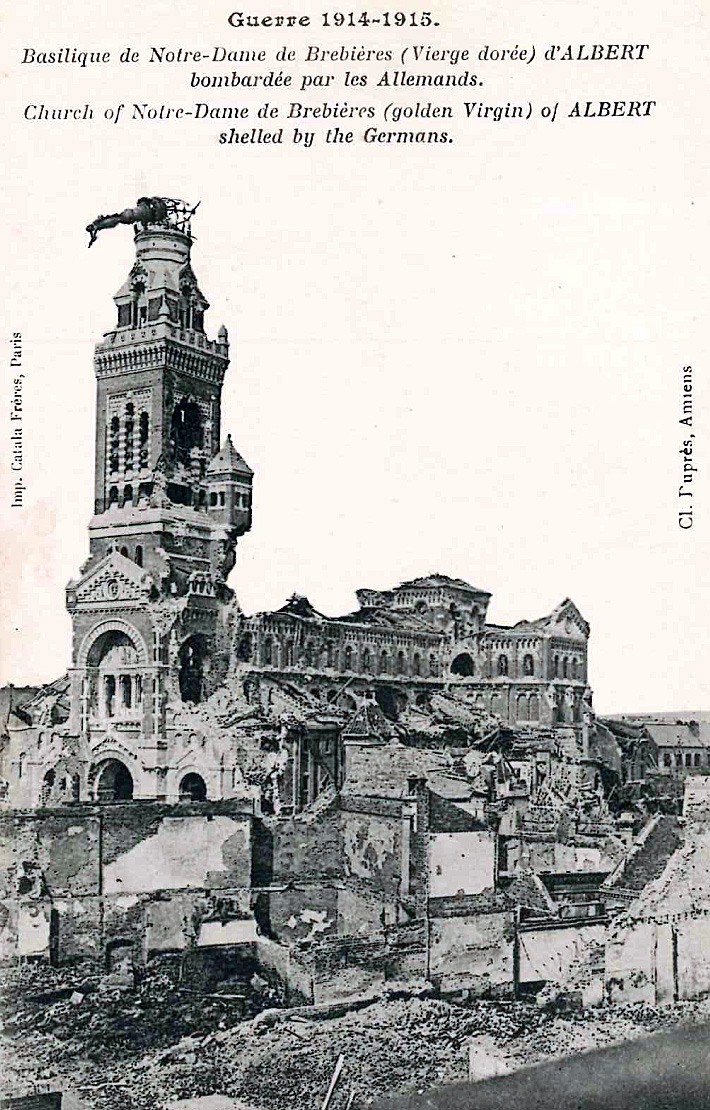 Basilica of Notre-Dame de Brebières tower.
Basilica of Notre-Dame de Brebières tower.
It’s now a nice little city located at half way between Paris and Lille (the biggest city of the northern France, third of the country).
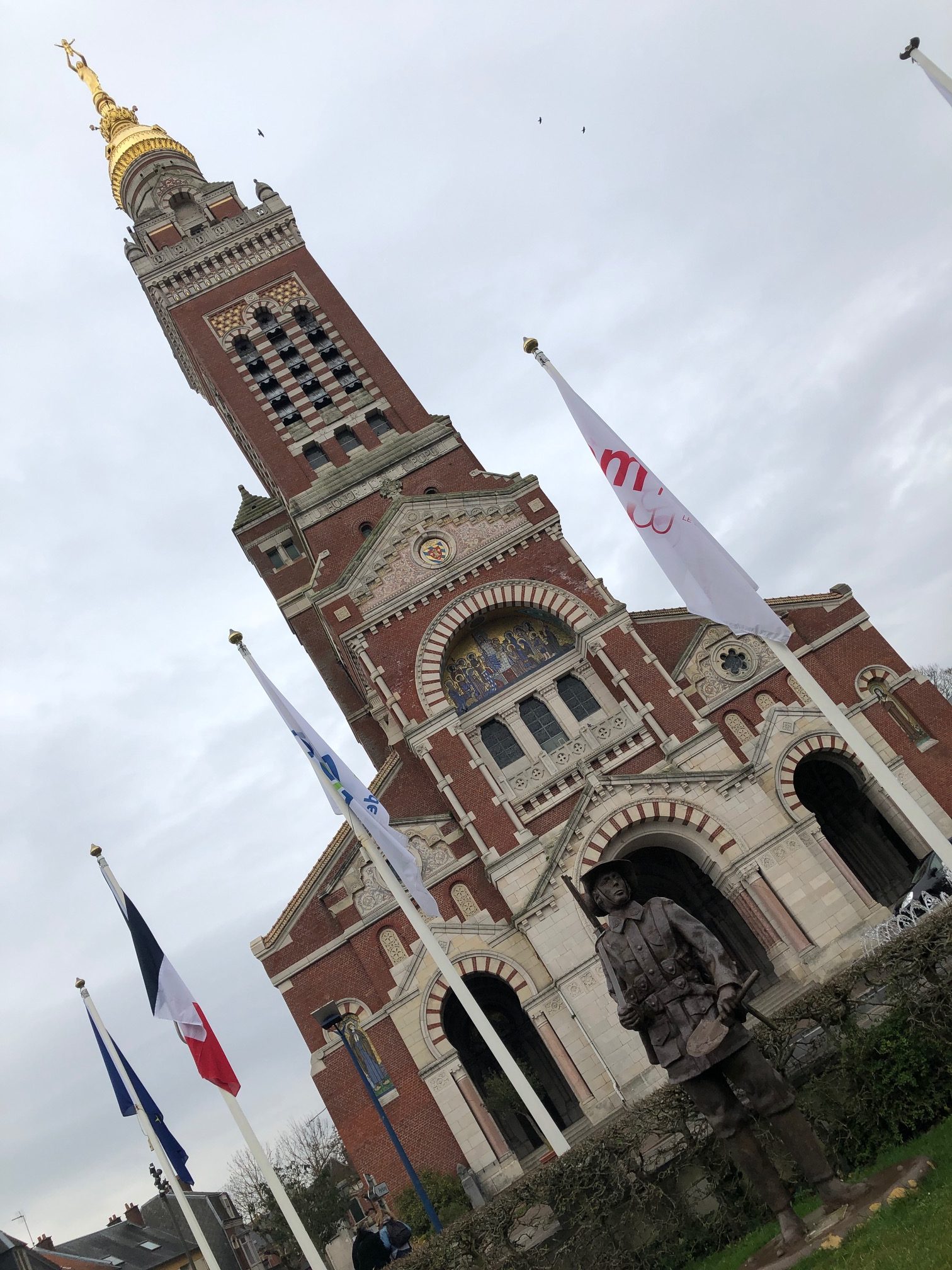 During World War I, the statue of Mary and the infant Jesus – designed by sculptor Albert Roze and dubbed the Golden Virgin – on top of the Basilica of Notre-Dame de Brebières was hit by a shell on 15 January 1915 and slumped to a near-horizontal position, where however it remained until further shelling in 1918 destroyed the tower. The British said that whoever made the statue fall would lose the war, whilst the Germans thought the opposite. A number of legends surrounding the Leaning Virgin developed among German, French, and British soldiers. The Leaning Virgin became an especially familiar image to the thousands of British soldiers who fought at the Battle of the Somme (1916), many of whom passed through Albert, which was situated three miles from the front lines.
During World War I, the statue of Mary and the infant Jesus – designed by sculptor Albert Roze and dubbed the Golden Virgin – on top of the Basilica of Notre-Dame de Brebières was hit by a shell on 15 January 1915 and slumped to a near-horizontal position, where however it remained until further shelling in 1918 destroyed the tower. The British said that whoever made the statue fall would lose the war, whilst the Germans thought the opposite. A number of legends surrounding the Leaning Virgin developed among German, French, and British soldiers. The Leaning Virgin became an especially familiar image to the thousands of British soldiers who fought at the Battle of the Somme (1916), many of whom passed through Albert, which was situated three miles from the front lines.
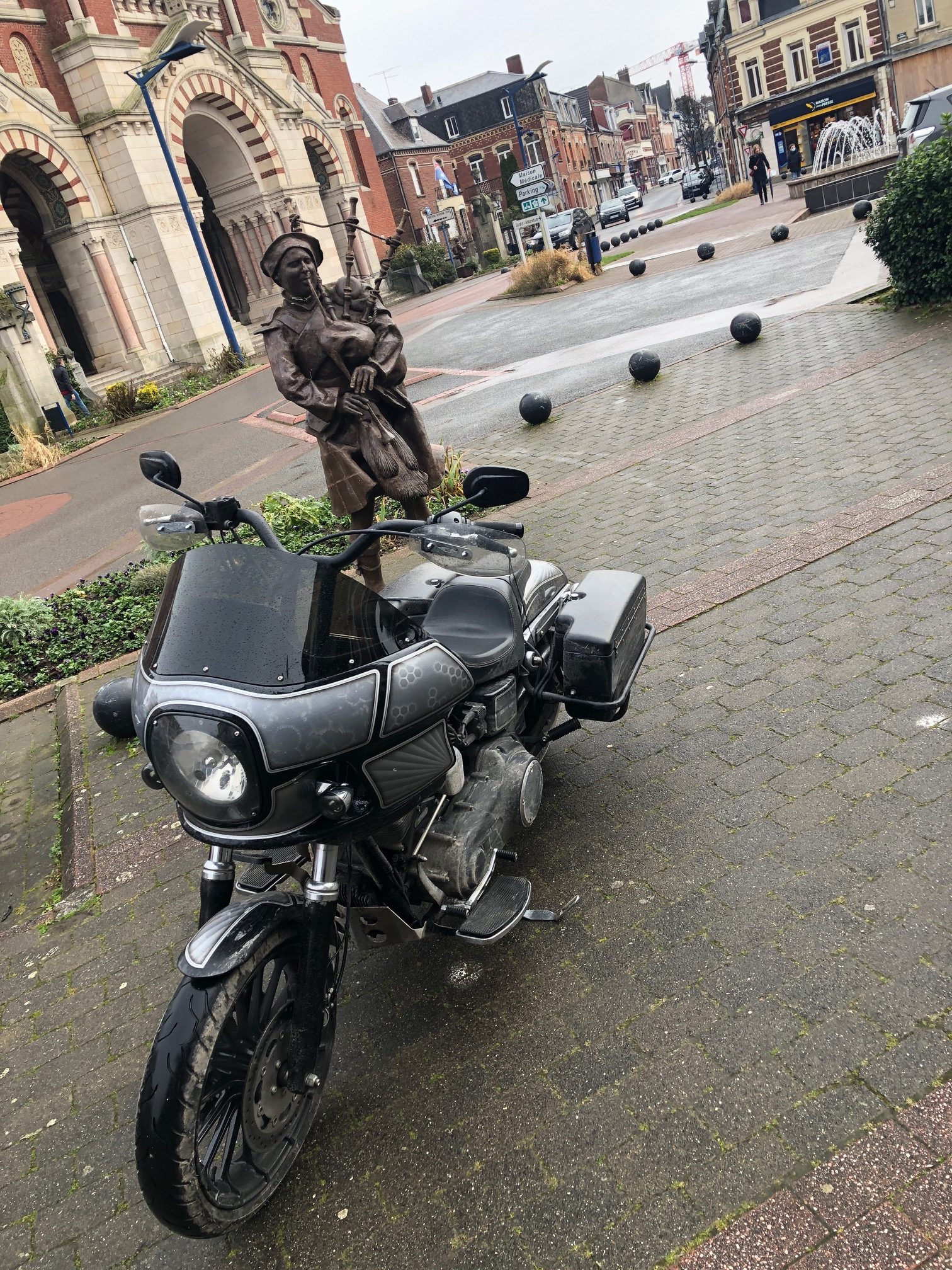 The German army recaptured the town in March 1918 during the Spring Offensive; the British, to prevent the Germans from using the church tower as a machine gun post, directed their bombardment against ‘imaginary’ trenches the other side of the basilica as orders specifically stopped them from targeting buildings in the town; the line of fire took the artillery through the basilica, thus it was destroyed.
The German army recaptured the town in March 1918 during the Spring Offensive; the British, to prevent the Germans from using the church tower as a machine gun post, directed their bombardment against ‘imaginary’ trenches the other side of the basilica as orders specifically stopped them from targeting buildings in the town; the line of fire took the artillery through the basilica, thus it was destroyed.
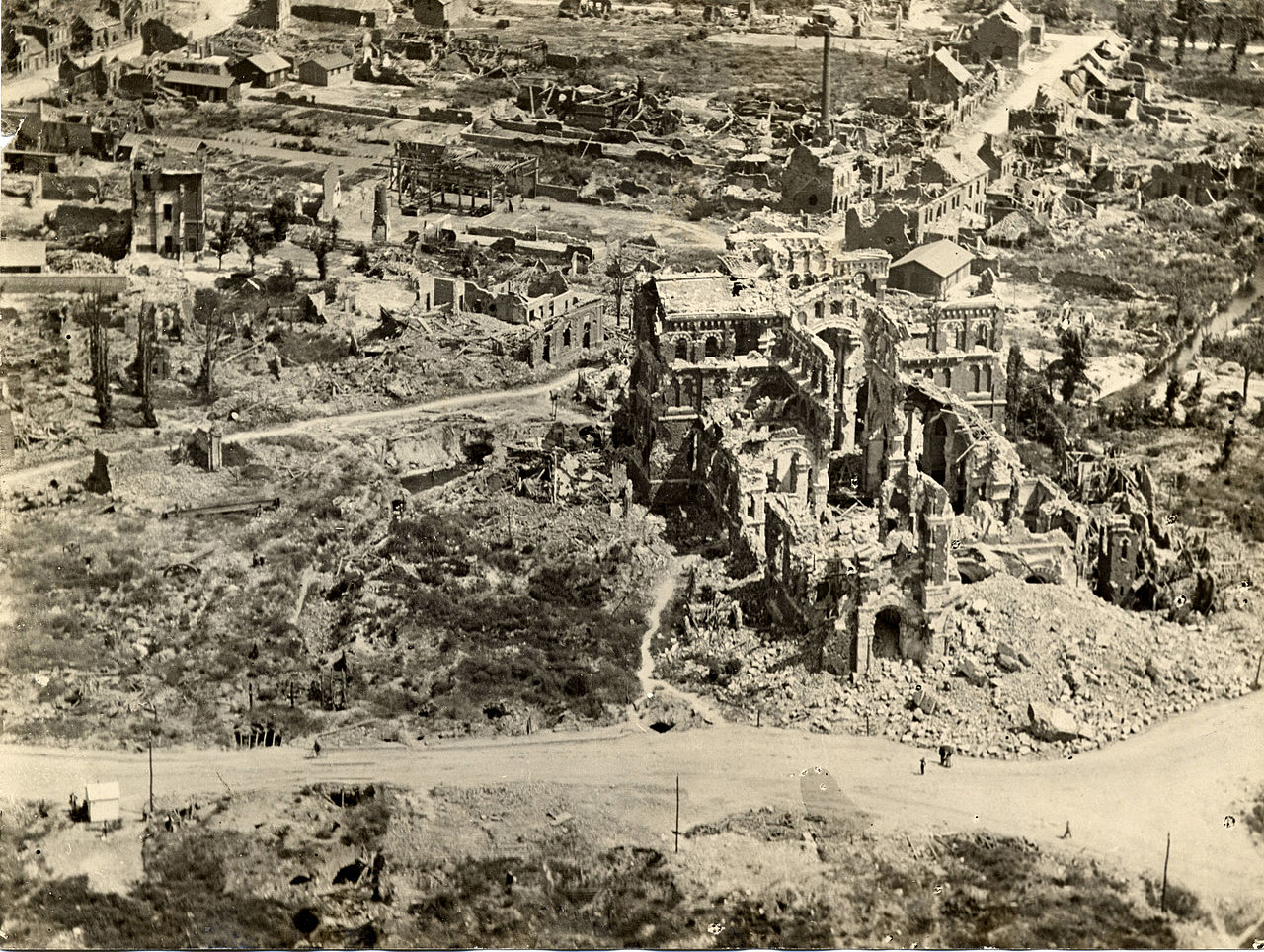 The statue fell in April 1918 and was never recovered. In August 1918 the Germans were again forced to retreat, and the British reoccupied Albert until the end of the war.
The statue fell in April 1918 and was never recovered. In August 1918 the Germans were again forced to retreat, and the British reoccupied Albert until the end of the war.
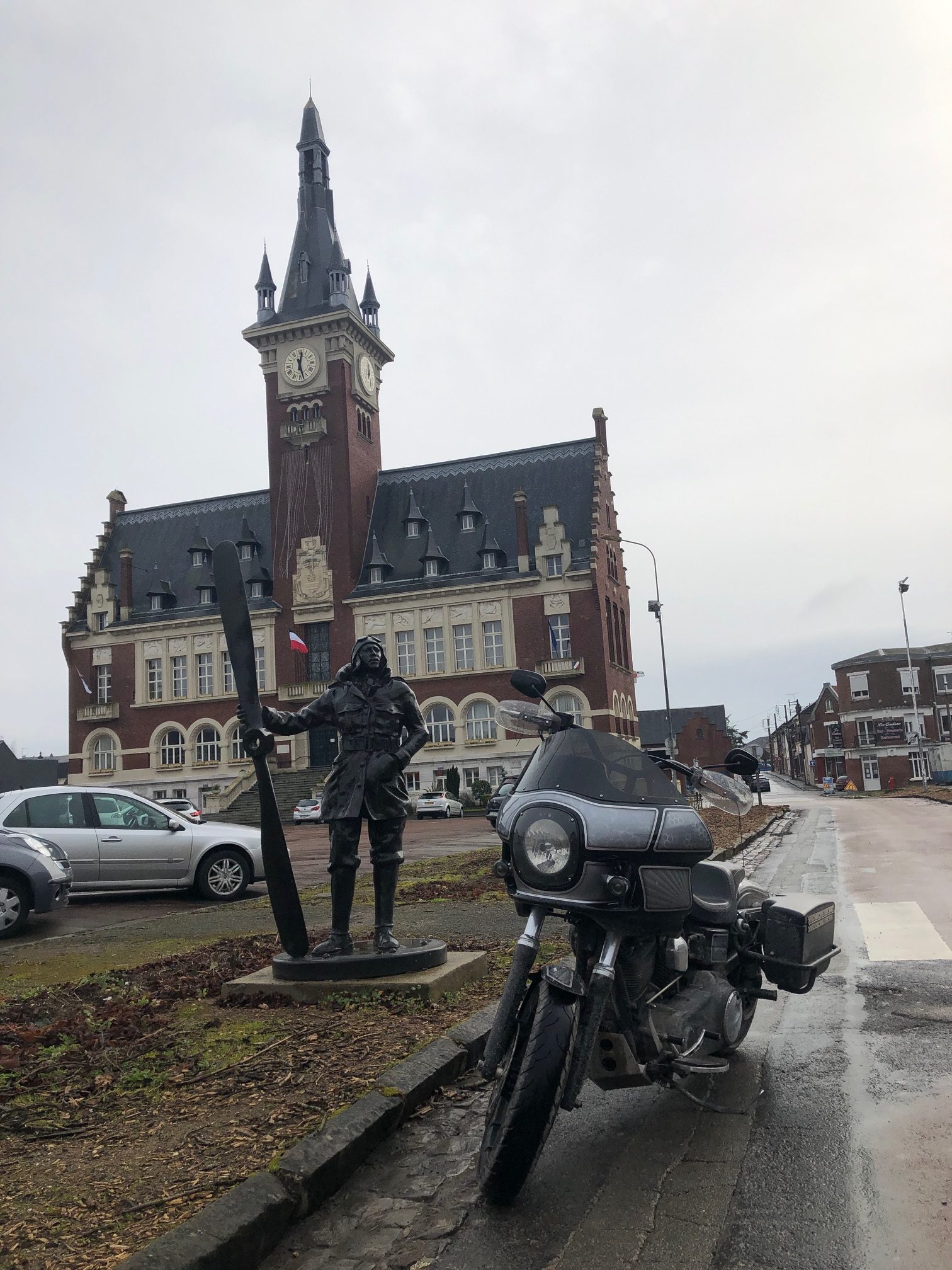 Albert was completely reconstructed after the war, including widening and re-orienting the town’s main streets. The Basilica, however, was faithfully rebuilt according to its original design by Eduoard Duthoit, the son of the architect who had overseen its construction in 1885–95. The present statue is an exact replica of Roze’s original design.
Albert was completely reconstructed after the war, including widening and re-orienting the town’s main streets. The Basilica, however, was faithfully rebuilt according to its original design by Eduoard Duthoit, the son of the architect who had overseen its construction in 1885–95. The present statue is an exact replica of Roze’s original design.
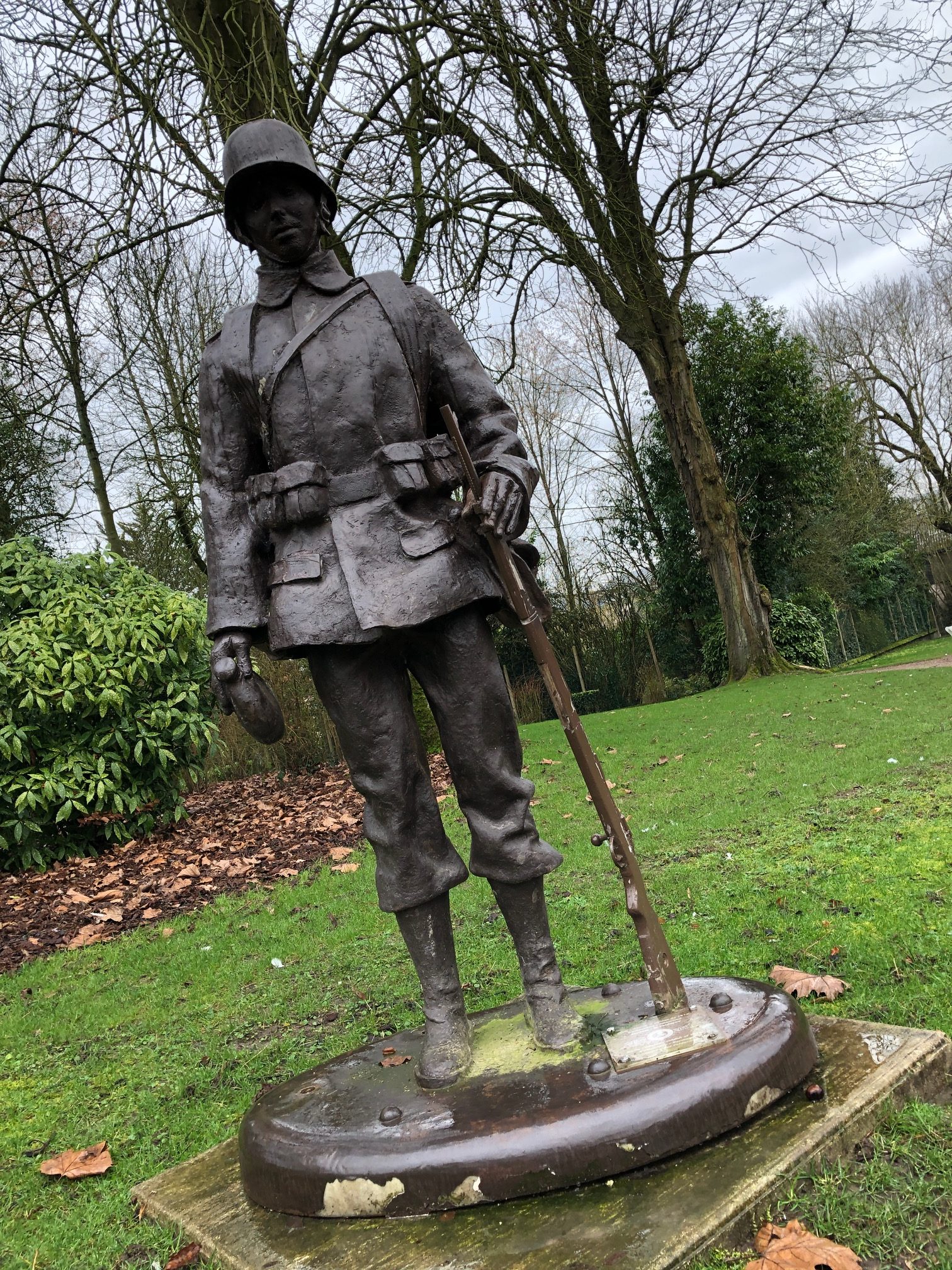 And a war memorial designed by Roze and featuring an image of the Leaning Virgin can be seen in the Abri (Shelter) Museum, which houses souvenirs of the war.
And a war memorial designed by Roze and featuring an image of the Leaning Virgin can be seen in the Abri (Shelter) Museum, which houses souvenirs of the war.
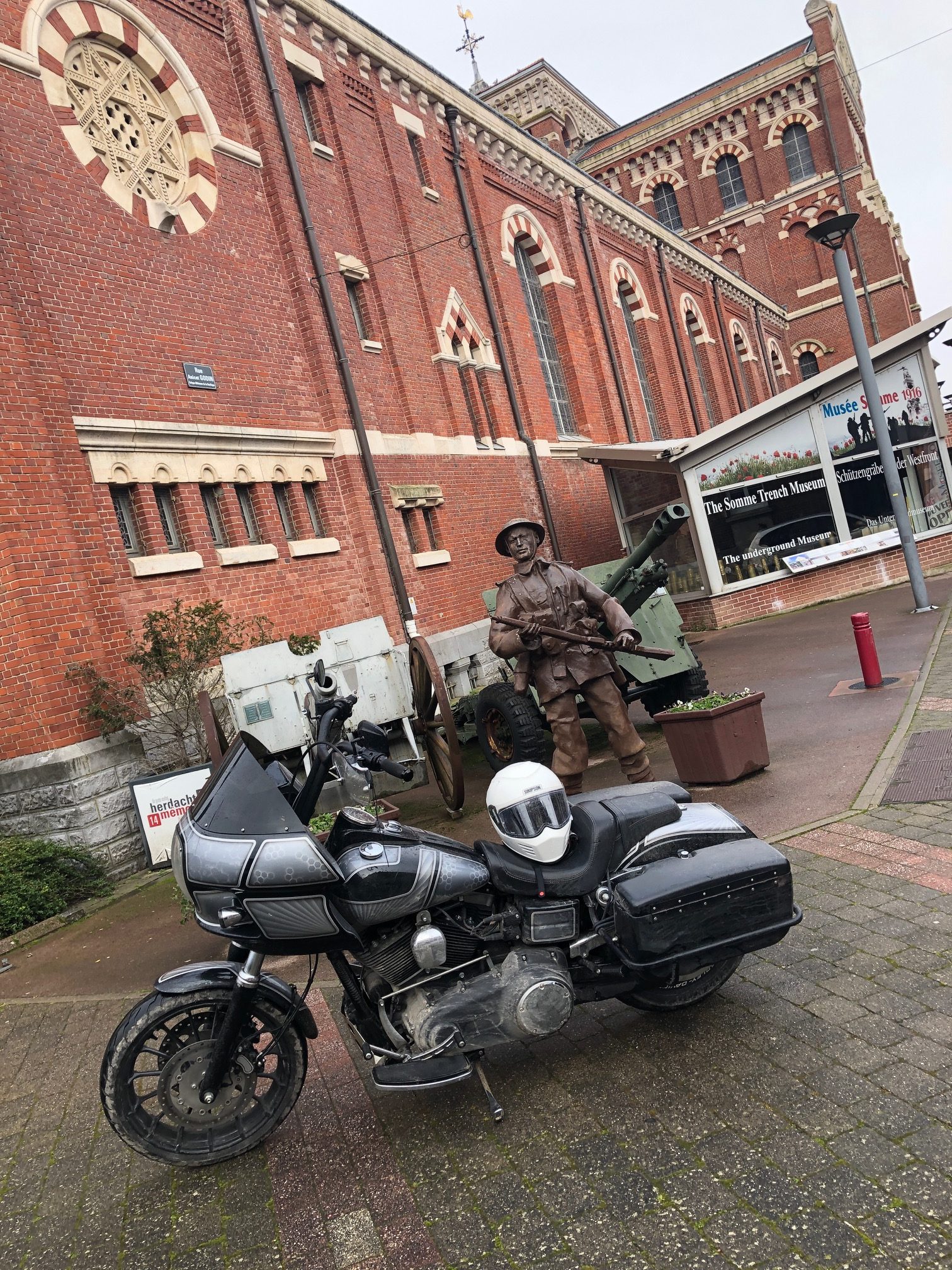 The underground shelters in which the museum is located served as protective bunkers for Albert’s residents during aerial bombardments in WWII.
The underground shelters in which the museum is located served as protective bunkers for Albert’s residents during aerial bombardments in WWII.
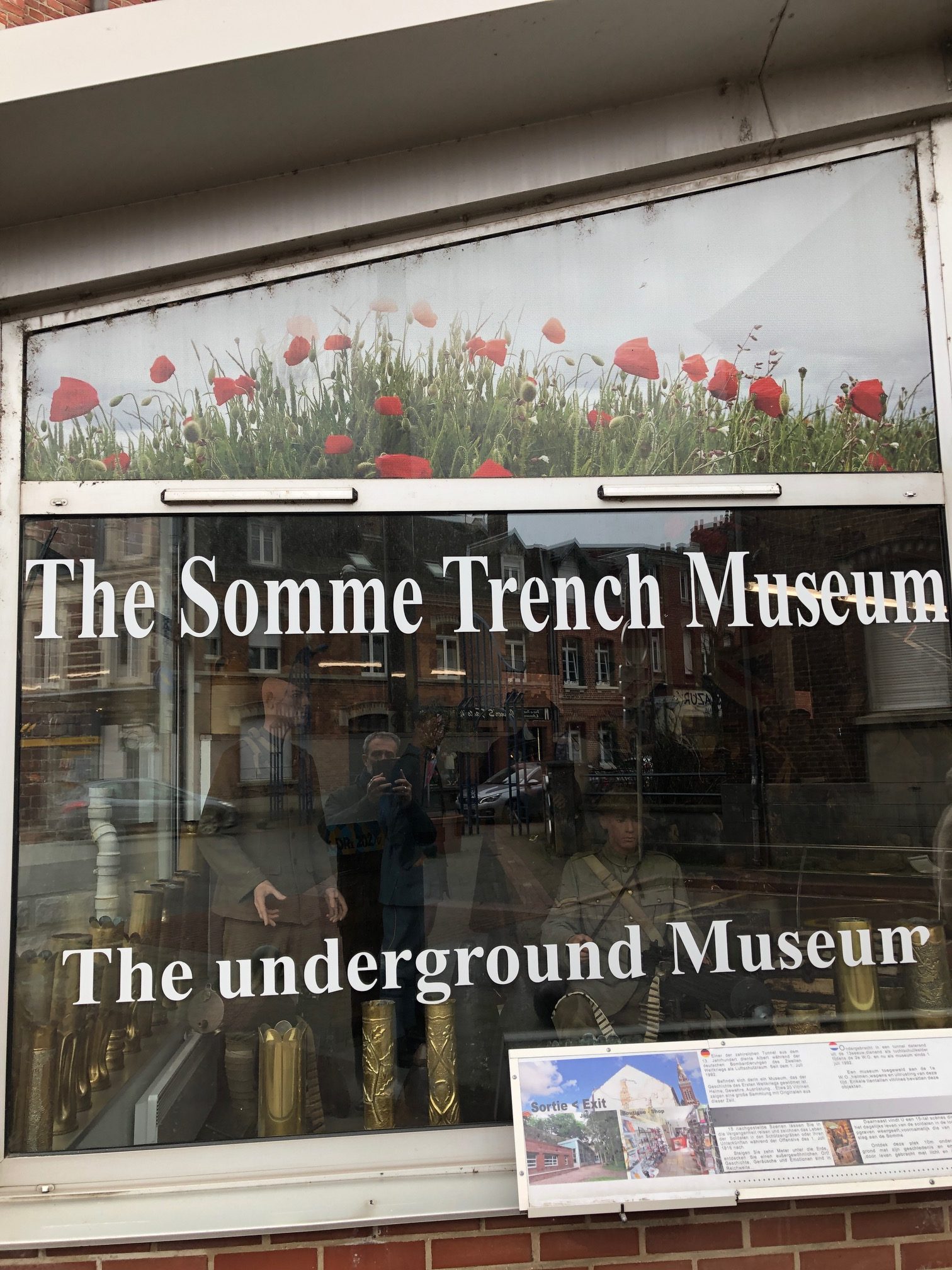 And this museum is simply … fabulous. The collections of uniforms, weapons, the sets and dioramas are exceptional.
And this museum is simply … fabulous. The collections of uniforms, weapons, the sets and dioramas are exceptional.
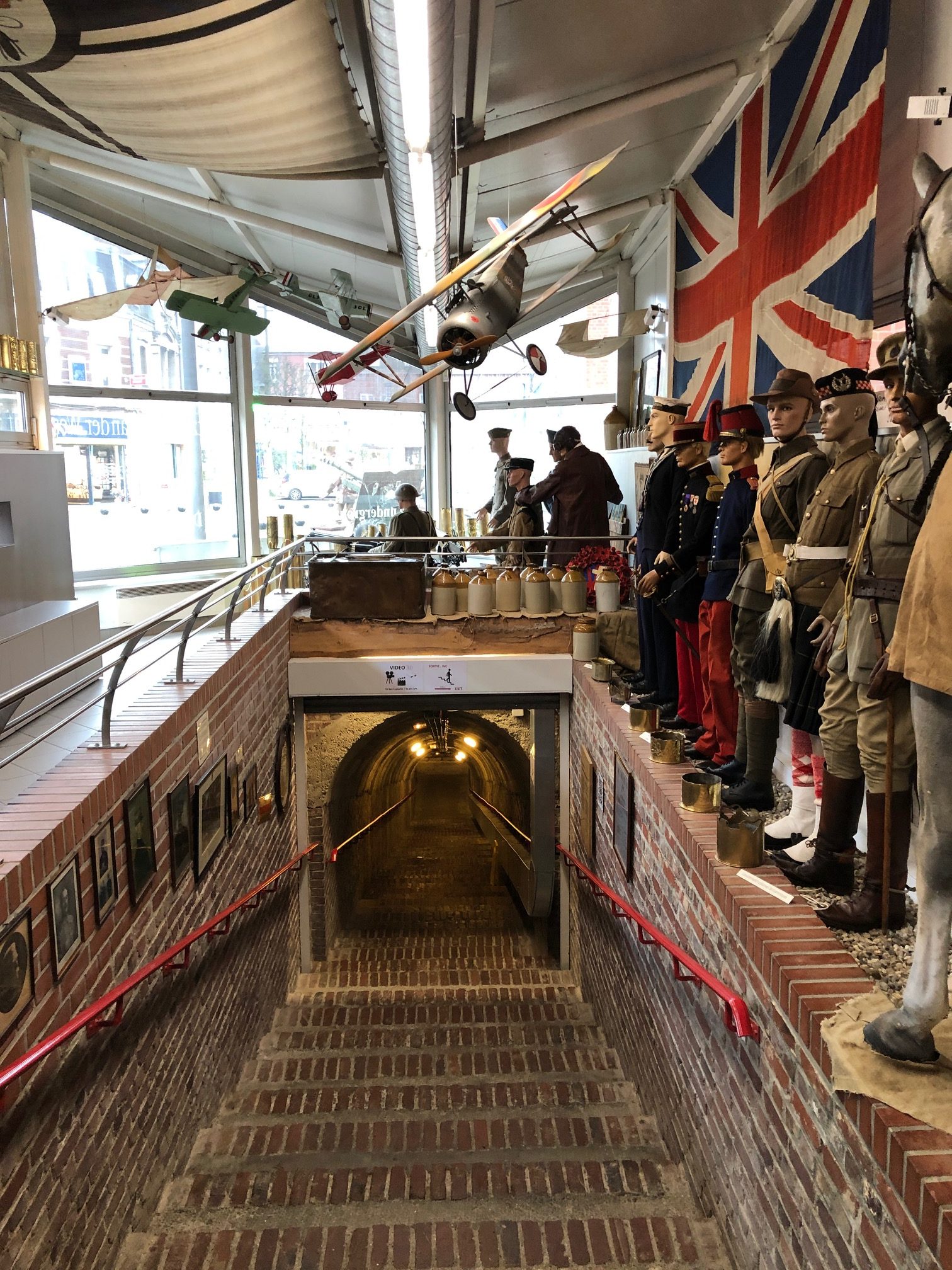 Theoricaly It’s best to go after 3pm when there are fewer visitors, but in winter and in this covid period you can move freely along the underground passage, 10m below the surface and 250m long. It’s easy to imagine the daily life of soldiers during the Great War.
Theoricaly It’s best to go after 3pm when there are fewer visitors, but in winter and in this covid period you can move freely along the underground passage, 10m below the surface and 250m long. It’s easy to imagine the daily life of soldiers during the Great War.
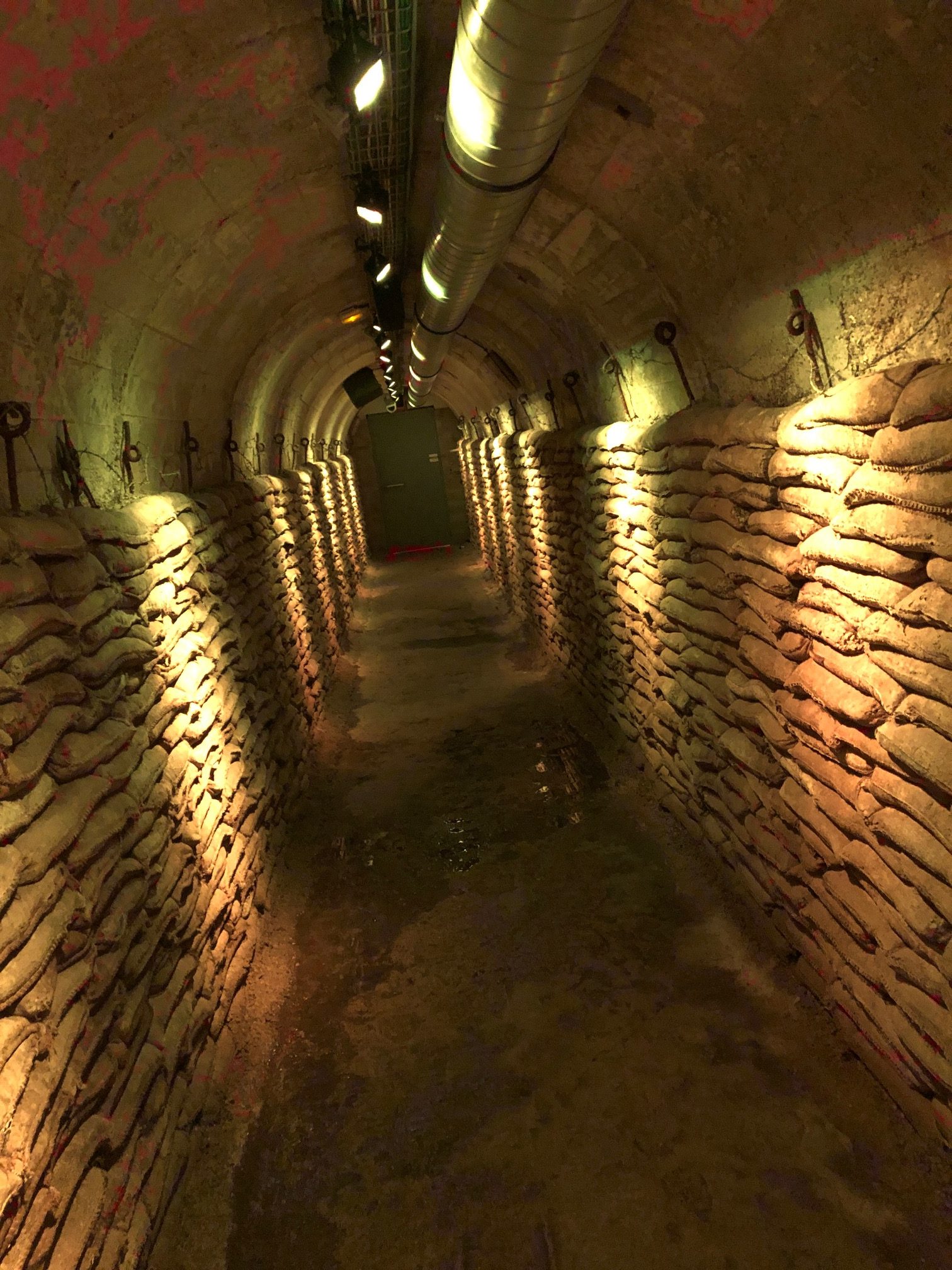 You can see that, in addition to fighting, there were many occupations for the troops, witness the pastime games and trench crafts on display!
You can see that, in addition to fighting, there were many occupations for the troops, witness the pastime games and trench crafts on display!
 The museum is housed in an underground passage, 250m long (dug by Clergy in the 13th century), linking the square to the garden-arboretum. It gives you a good idea of what life must have been like for soldiers in the trenches
The museum is housed in an underground passage, 250m long (dug by Clergy in the 13th century), linking the square to the garden-arboretum. It gives you a good idea of what life must have been like for soldiers in the trenches
 Located in the centre of Albert, this museum goes back over the soldiers’ life in the trenches during the offensive of 1 July 1916.
Located in the centre of Albert, this museum goes back over the soldiers’ life in the trenches during the offensive of 1 July 1916.
 There are about 15 alcoves and display cases in a 230 metre-long underground that was used as an air-raid shelter during World War Two.
There are about 15 alcoves and display cases in a 230 metre-long underground that was used as an air-raid shelter during World War Two.
 For sure, one of the best war museum I have ever seen.
For sure, one of the best war museum I have ever seen.
 Ok, after this very instructive visit, it was time… for a coffee: forget it man, bars are still closed. Impossible to find any restaurant for lunch too. Not a problem, I have a bottle of (very) cold water, it’s ok, everything is fine and it’s time to continue my trip. And, outta nowhere, it’s still cold, rainy, windy and muddy … perfect conditions for WWI remembrance.
Ok, after this very instructive visit, it was time… for a coffee: forget it man, bars are still closed. Impossible to find any restaurant for lunch too. Not a problem, I have a bottle of (very) cold water, it’s ok, everything is fine and it’s time to continue my trip. And, outta nowhere, it’s still cold, rainy, windy and muddy … perfect conditions for WWI remembrance.
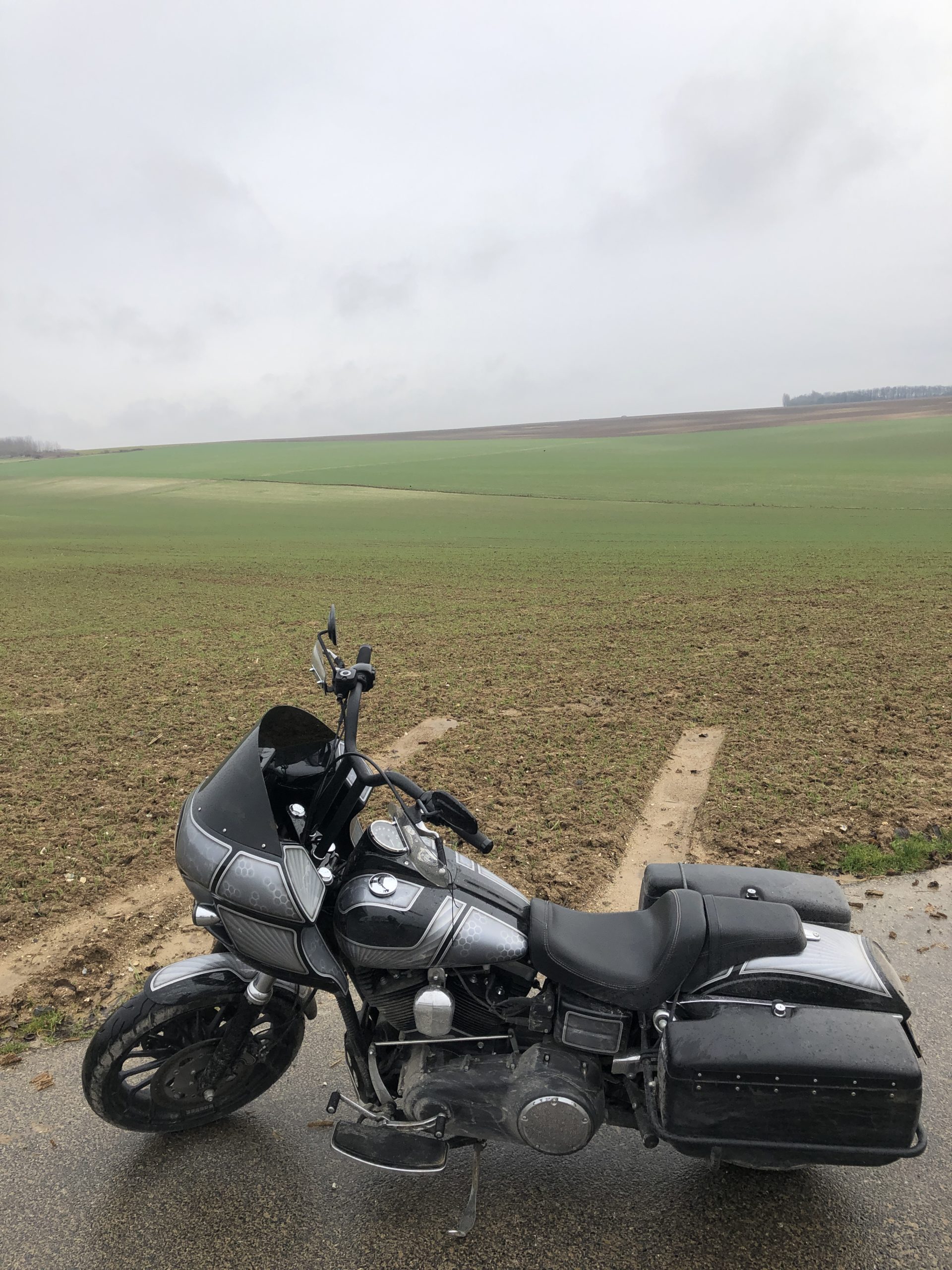 Second stage, the unbelievable Lochnagar crater. Let’s go for a new shoot of History and emotion.
Second stage, the unbelievable Lochnagar crater. Let’s go for a new shoot of History and emotion.
 Back on the road, for a short distance (10 minutes) to join this famous mine crater lost in the middle of nowhere.
Back on the road, for a short distance (10 minutes) to join this famous mine crater lost in the middle of nowhere.
 The Lochnagar mine south of the village of La Boisselle was an underground explosive charge, secretly planted by the British, to be ready for 1 July 1916, the first day of the Somme. The mine was dug by the Tunnelling Companies of the Royal Engineers under a German field fortification known as Schwabenhöhe (Swabian Height).
The Lochnagar mine south of the village of La Boisselle was an underground explosive charge, secretly planted by the British, to be ready for 1 July 1916, the first day of the Somme. The mine was dug by the Tunnelling Companies of the Royal Engineers under a German field fortification known as Schwabenhöhe (Swabian Height).
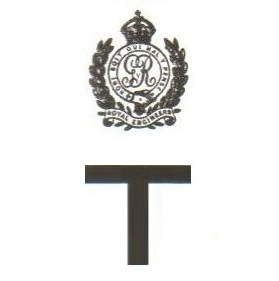 The British named the mine after Lochnagar Street, the trench from which the gallery was driven. The charge at Lochnagar was one of 19 mines that were dug under the German lines on the British section of the Somme front, to assist the infantry advance at the start of the battle. The mine was sprung at 7:28 a.m. on 1 July 1916 and left a crater 98 ft (30 m) deep and 330 ft (100 m) wide, which was captured and held by British troops.
The British named the mine after Lochnagar Street, the trench from which the gallery was driven. The charge at Lochnagar was one of 19 mines that were dug under the German lines on the British section of the Somme front, to assist the infantry advance at the start of the battle. The mine was sprung at 7:28 a.m. on 1 July 1916 and left a crater 98 ft (30 m) deep and 330 ft (100 m) wide, which was captured and held by British troops.
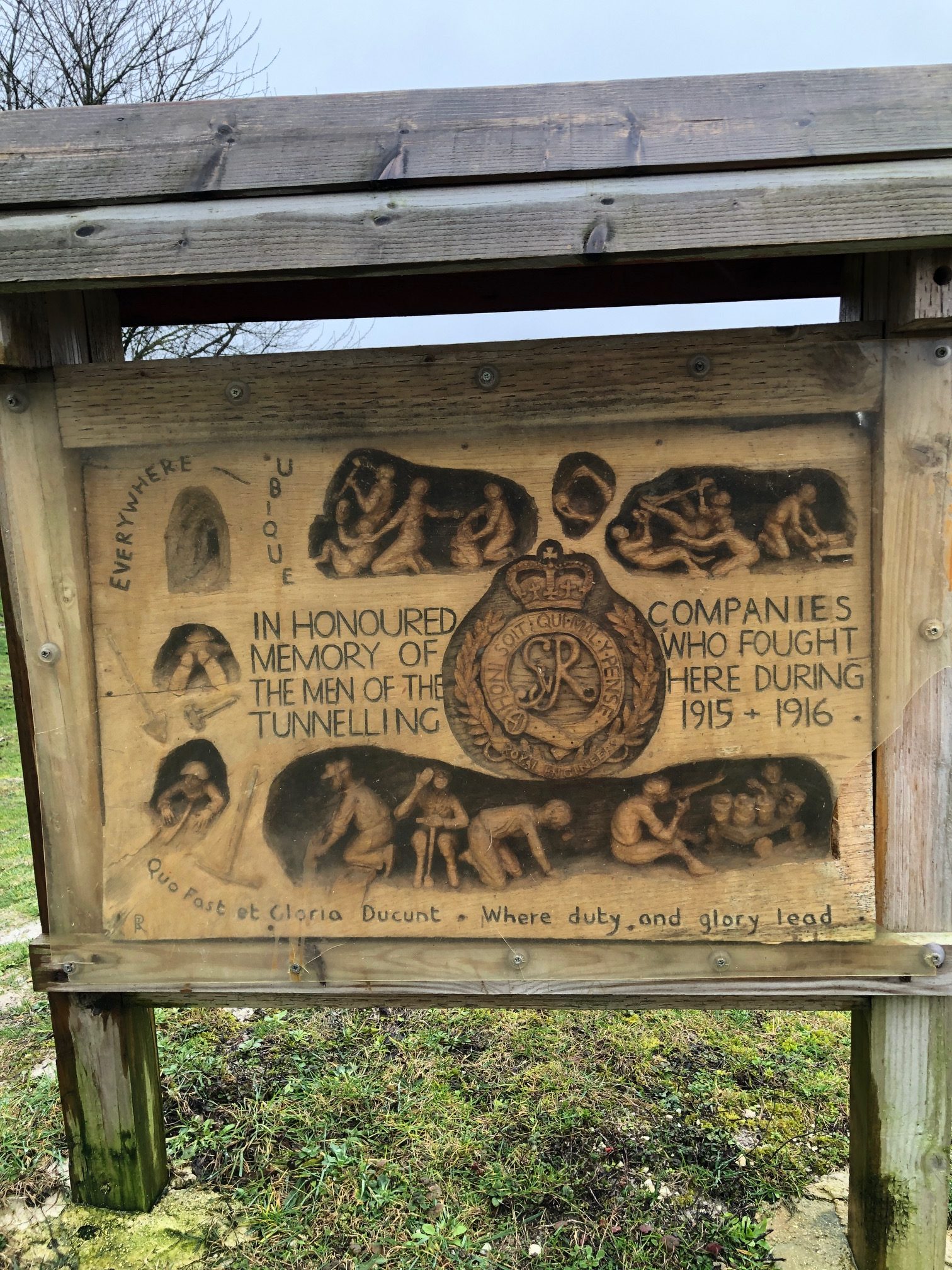 The attack on either flank was defeated by German small arms and artillery fire, except on the extreme right flank and just south of La Boisselle, north of the Lochnagar Crater.
The attack on either flank was defeated by German small arms and artillery fire, except on the extreme right flank and just south of La Boisselle, north of the Lochnagar Crater.
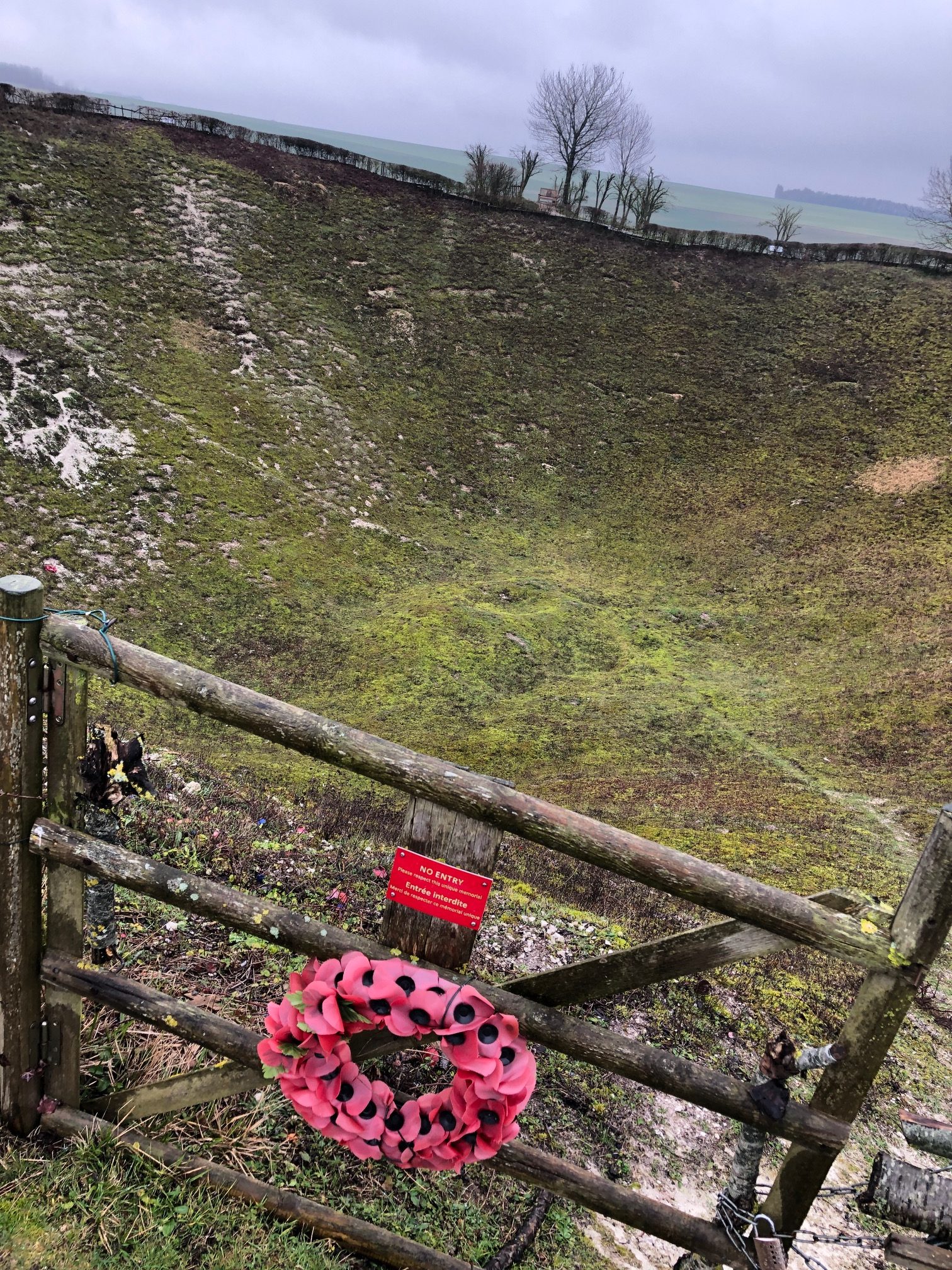 The crater has been preserved as a memorial and a religious service is held each 1 July. And I can testify that none photography can give you a real idea of what is this enormous hole in the heart. It’s unbelievable even when you are right in front of it.
The crater has been preserved as a memorial and a religious service is held each 1 July. And I can testify that none photography can give you a real idea of what is this enormous hole in the heart. It’s unbelievable even when you are right in front of it.
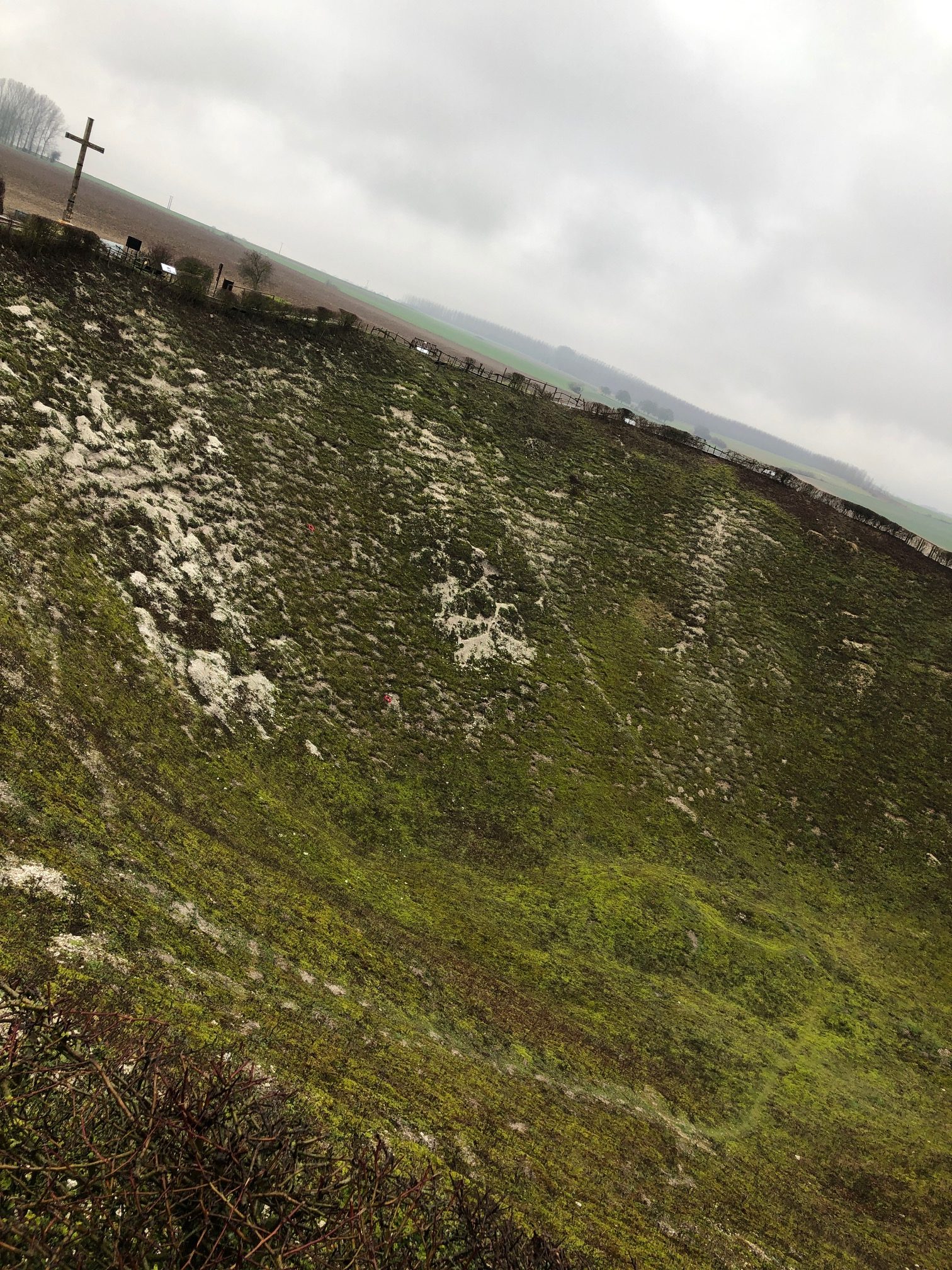 Despite their colossal size, the Lochnagar mines failed sufficiently to neutralise the German defences in La Boisselle. The ruined village was meant to be captured in 20 minutes but by the end of the first day on the Somme, the III Corps divisions had suffered more than 11,000 casualties for no result. At Mash Valley, the attackers lost 5,100 men before noon and at Sausage Valley near the crater of the Lochnagar mine, there were over 6,000 casualties, the highest concentration on the battlefield. The 34th Division in III Corps had suffered the greatest number of casualties of the British divisions engaged on 1 July.
Despite their colossal size, the Lochnagar mines failed sufficiently to neutralise the German defences in La Boisselle. The ruined village was meant to be captured in 20 minutes but by the end of the first day on the Somme, the III Corps divisions had suffered more than 11,000 casualties for no result. At Mash Valley, the attackers lost 5,100 men before noon and at Sausage Valley near the crater of the Lochnagar mine, there were over 6,000 casualties, the highest concentration on the battlefield. The 34th Division in III Corps had suffered the greatest number of casualties of the British divisions engaged on 1 July.
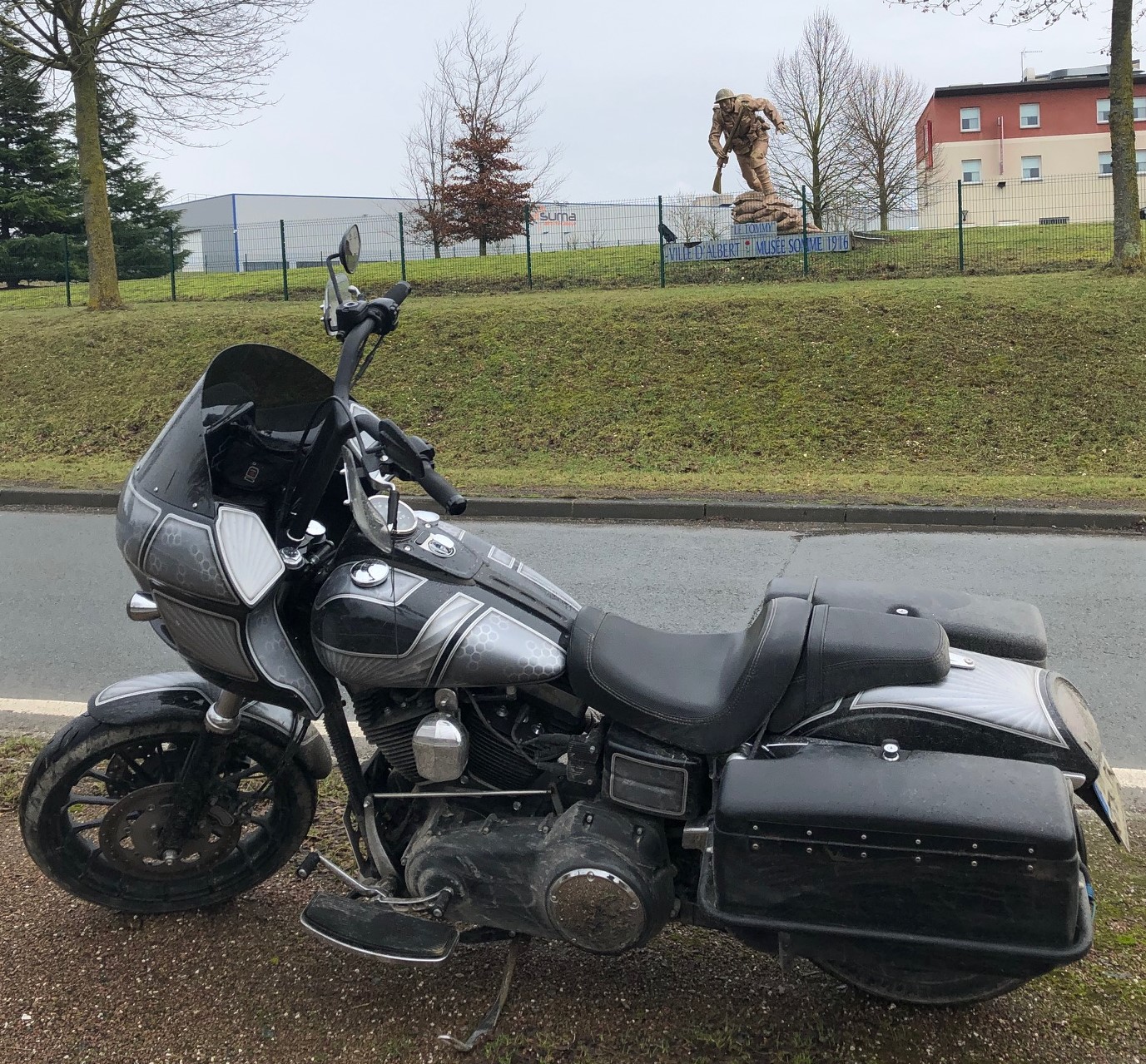 Debris was flung almost a mile into the air, as graphically recorded by Royal Flying Corps pilot Cecil Lewis in his book ‘Sagittarius Rising’: ‘The whole earth heaved and flared, a tremendous and magnificent column rose up into the sky. There was an ear-splitting roar, drowning all the guns, flinging the machine sideways in the repercussing air. The earth column rose higher and higher to almost 4,000 feet.’The reason the Crater is so large is that the chambers were overcharged. Meaning, sufficient explosive was used to, not only break the surface and form a crater, but enough to cause spoil to fall in the surrounding fields and form a lip around the Crater of approximately 15ft high, to protect the advancing British troops from enfilade machine-gun fire from the nearby village of La Boisselle.
Debris was flung almost a mile into the air, as graphically recorded by Royal Flying Corps pilot Cecil Lewis in his book ‘Sagittarius Rising’: ‘The whole earth heaved and flared, a tremendous and magnificent column rose up into the sky. There was an ear-splitting roar, drowning all the guns, flinging the machine sideways in the repercussing air. The earth column rose higher and higher to almost 4,000 feet.’The reason the Crater is so large is that the chambers were overcharged. Meaning, sufficient explosive was used to, not only break the surface and form a crater, but enough to cause spoil to fall in the surrounding fields and form a lip around the Crater of approximately 15ft high, to protect the advancing British troops from enfilade machine-gun fire from the nearby village of La Boisselle.
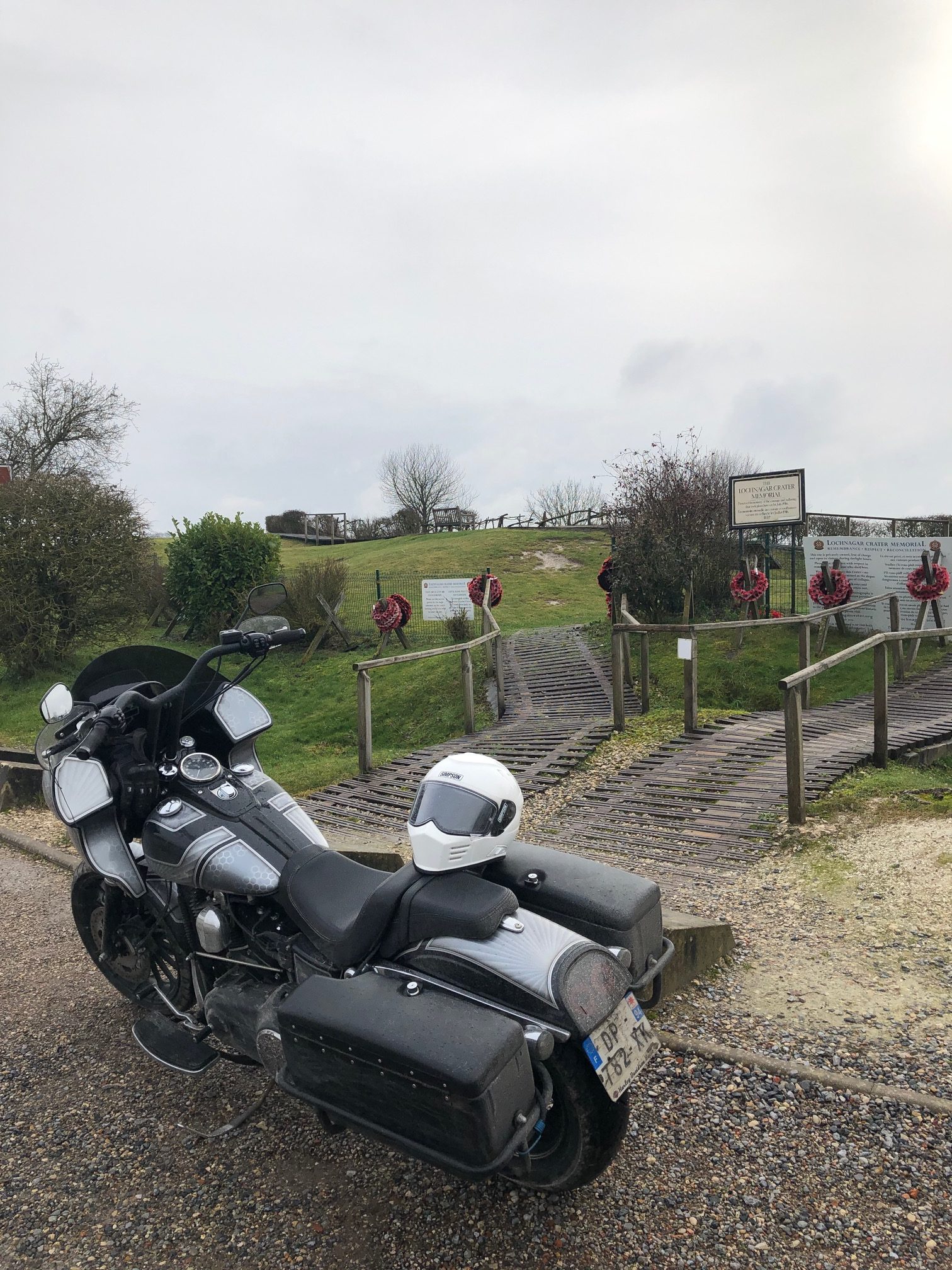 The Lochnagar Crater is remarkable for many reasons, to this day it is the largest crater ever made by man in anger – but statistically there are many other interesting facts that make Lochnagar both an awe-inspiring and inspirational place.
The Lochnagar Crater is remarkable for many reasons, to this day it is the largest crater ever made by man in anger – but statistically there are many other interesting facts that make Lochnagar both an awe-inspiring and inspirational place.
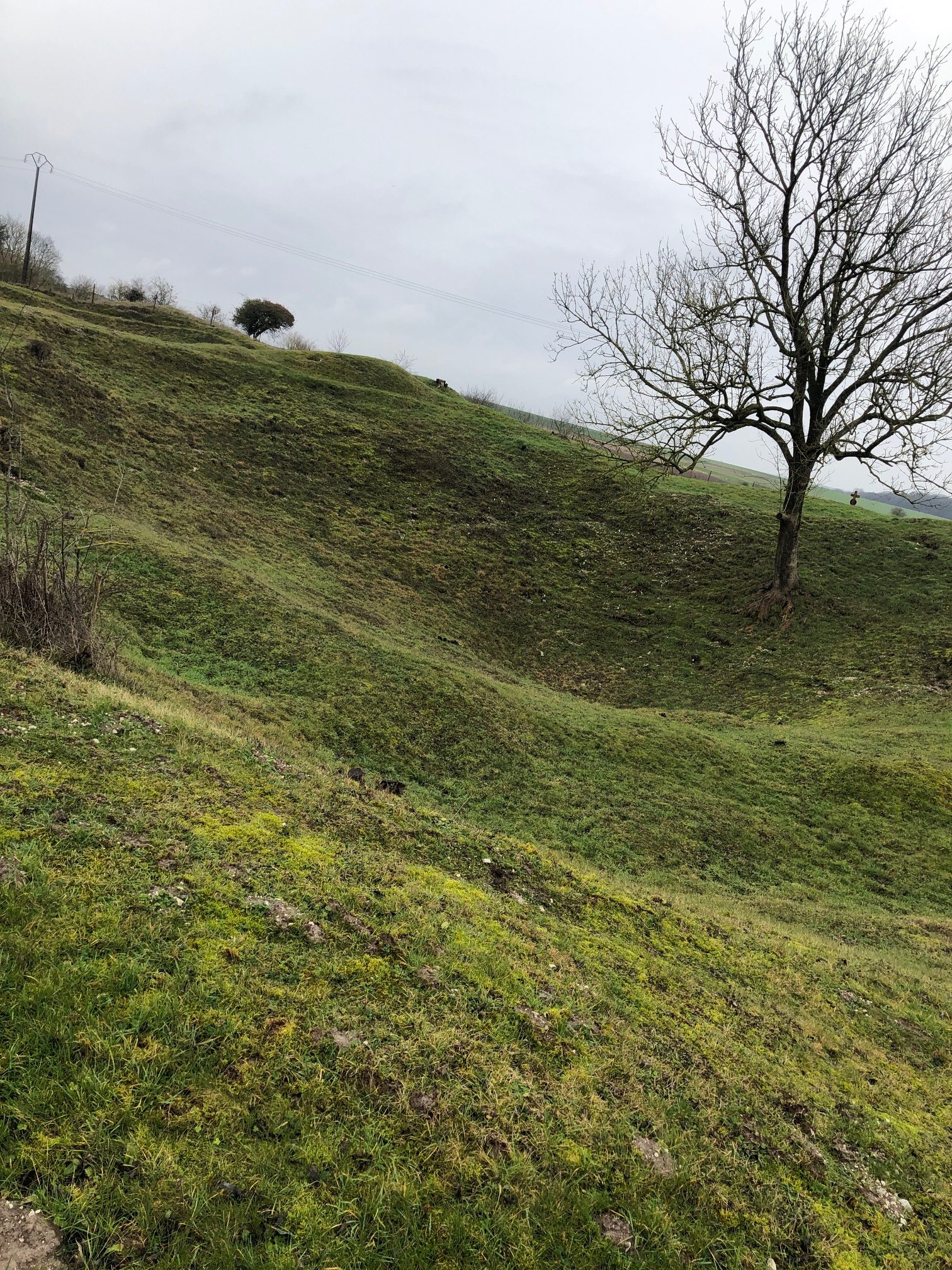 The Lochnagar mine was the largest of the 17 mines that exploded on 1st of July 1916. It was packed with 27.216 kilograms or 27,216 tons (60.000lbs) of ammonal in two charges 18 meters (60ft) apart and 16 meters (52 feet) below the surface.
The Lochnagar mine was the largest of the 17 mines that exploded on 1st of July 1916. It was packed with 27.216 kilograms or 27,216 tons (60.000lbs) of ammonal in two charges 18 meters (60ft) apart and 16 meters (52 feet) below the surface.
 The mine created a crater 100.5 meters (330ft) across and 21 meters (70ft) deep, including a lip 4.6 meters (15ft) high. This is the largest crater made by man in anger in history. To give you some idea of its comparable size: a jumbo jet is 63 meters long with a wing span of 60 meters (it would easily fit in the crater).
The mine created a crater 100.5 meters (330ft) across and 21 meters (70ft) deep, including a lip 4.6 meters (15ft) high. This is the largest crater made by man in anger in history. To give you some idea of its comparable size: a jumbo jet is 63 meters long with a wing span of 60 meters (it would easily fit in the crater).
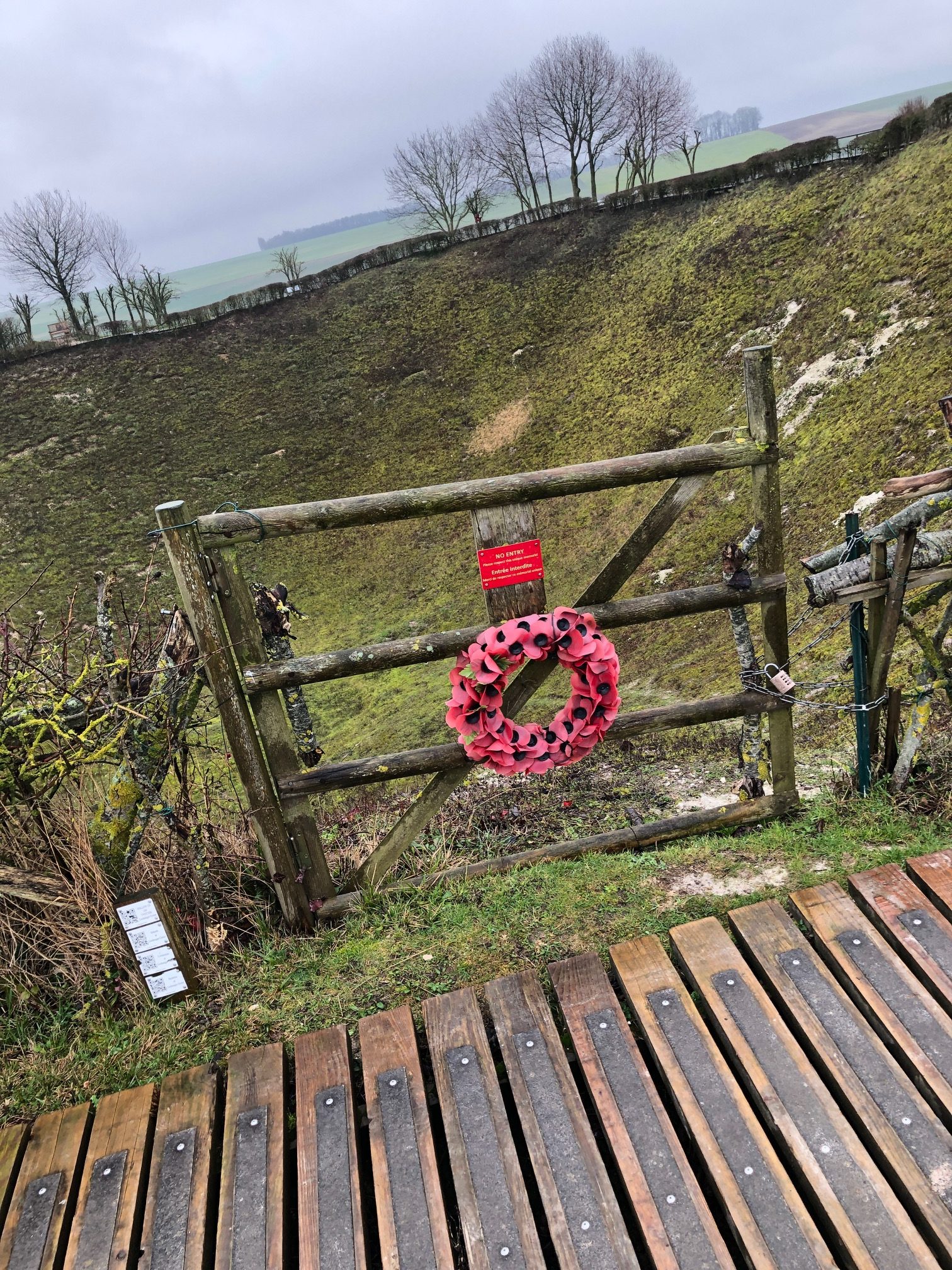 The tunnel was 315m (1.030ft) long. This was the longuest tunnel dug into chalk during the war.
The tunnel was 315m (1.030ft) long. This was the longuest tunnel dug into chalk during the war.
 The explosion constituted what was then, the loudest man-made sound in history.
The explosion constituted what was then, the loudest man-made sound in history.
 It obliterated between 91 meters (300ft) and 122 meters (400ft) of th e German dug-out which are thought to have been full of German troops.
It obliterated between 91 meters (300ft) and 122 meters (400ft) of th e German dug-out which are thought to have been full of German troops.
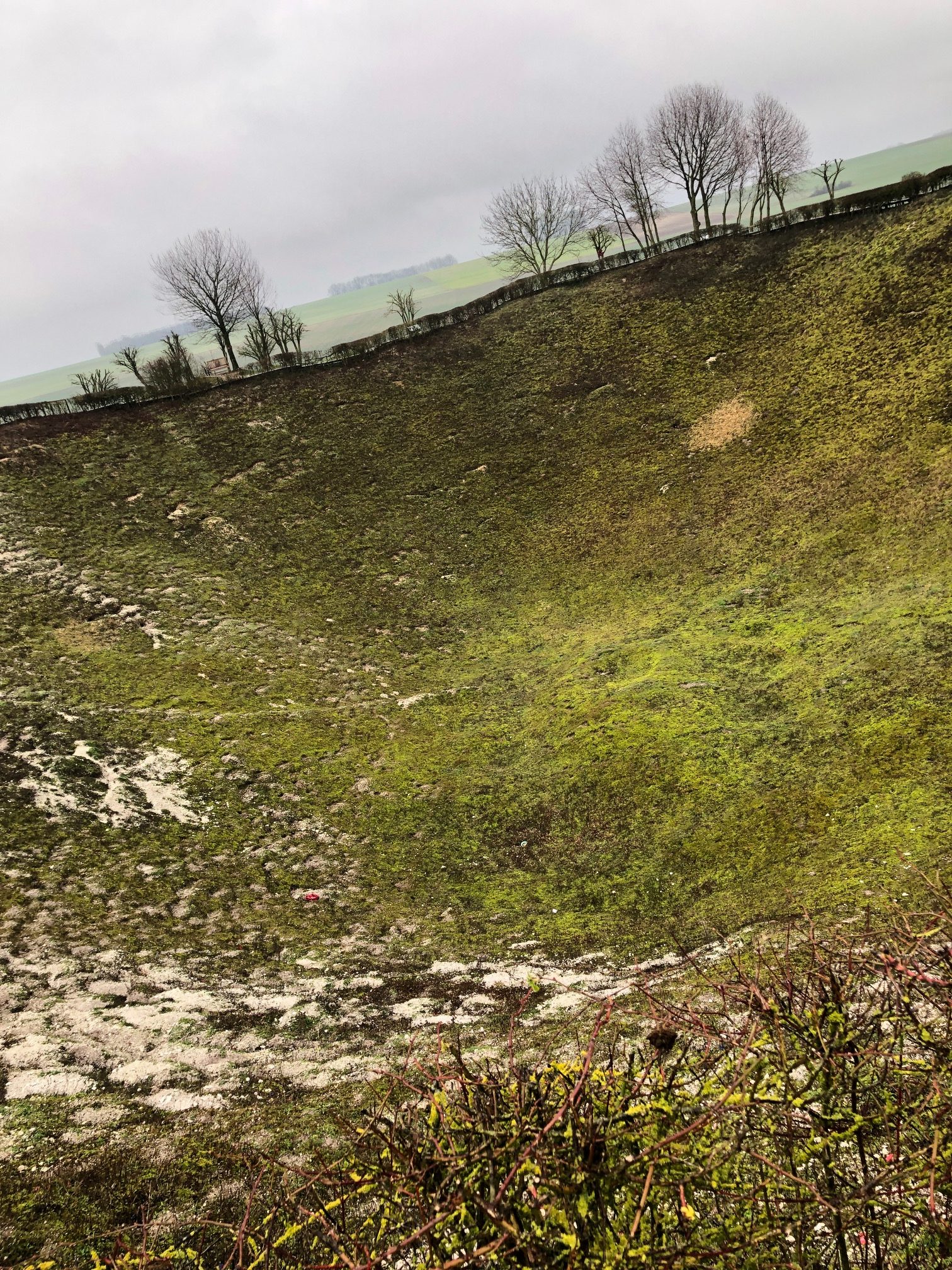 The mine was detonated at 7.28am on the morning of 1 July, 2 minutes before one of the bloodiest battle in history. More men died on the first day of the Battle of the Somme than the total casualty numbers (of both sides) at the Battle of Waterloo.
The mine was detonated at 7.28am on the morning of 1 July, 2 minutes before one of the bloodiest battle in history. More men died on the first day of the Battle of the Somme than the total casualty numbers (of both sides) at the Battle of Waterloo.
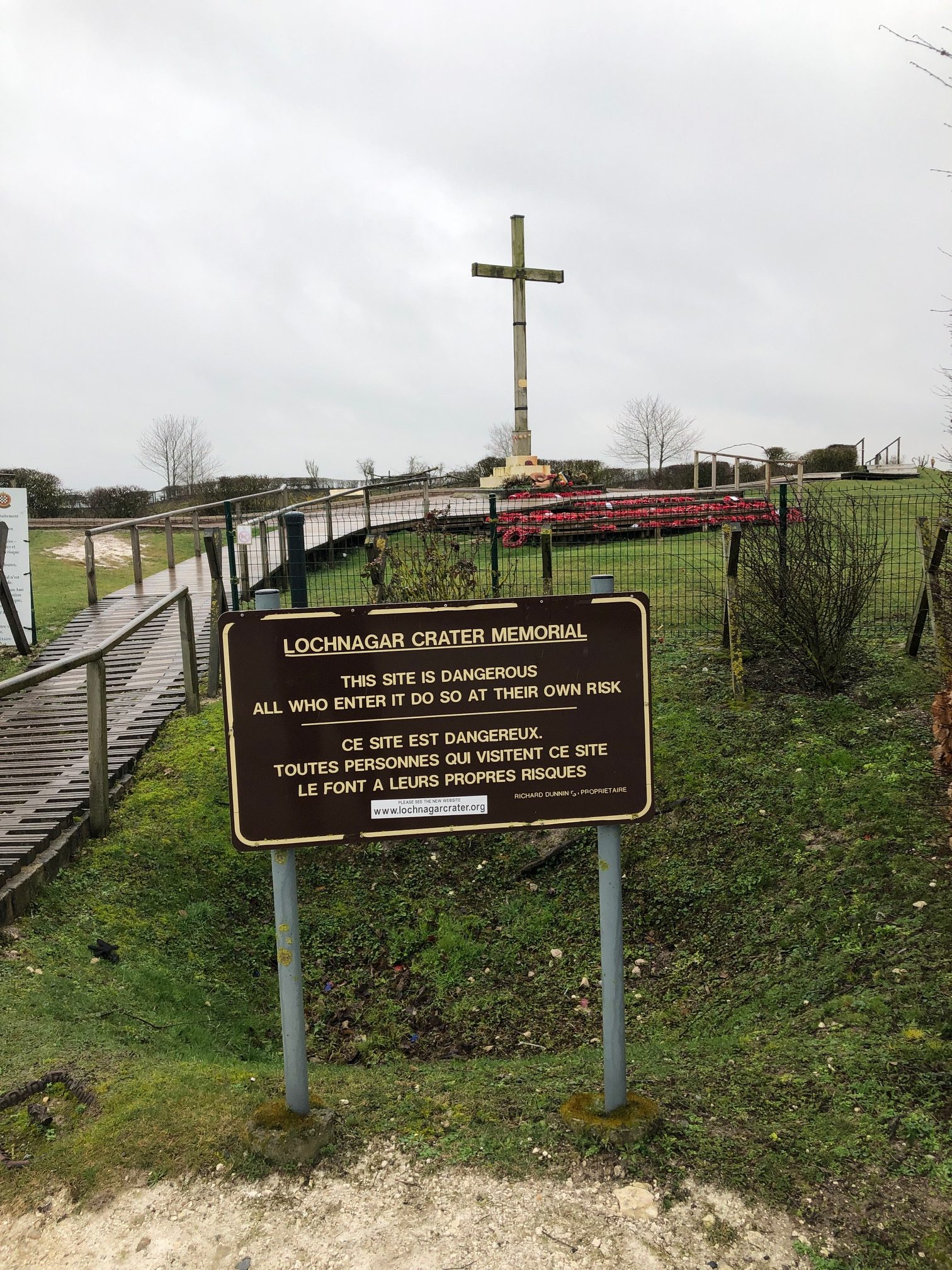 Debris from the explosion rose some 1.219 meters (4.000ft) into the air. That is more than 3 times the height of the Empire State Building which stand at 443,2 meters (1.454ft) high including its antenna.
Debris from the explosion rose some 1.219 meters (4.000ft) into the air. That is more than 3 times the height of the Empire State Building which stand at 443,2 meters (1.454ft) high including its antenna.
 So, you understand why I say that it’s impossible to visit such a site under the sun with an hawaiian shirt and a soda in the hand. It’s a site you must see under the rain, in the cold wind under a grey sky to pay tribute to all these soldiers who suffered so much and have been killed for … no result.
So, you understand why I say that it’s impossible to visit such a site under the sun with an hawaiian shirt and a soda in the hand. It’s a site you must see under the rain, in the cold wind under a grey sky to pay tribute to all these soldiers who suffered so much and have been killed for … no result.
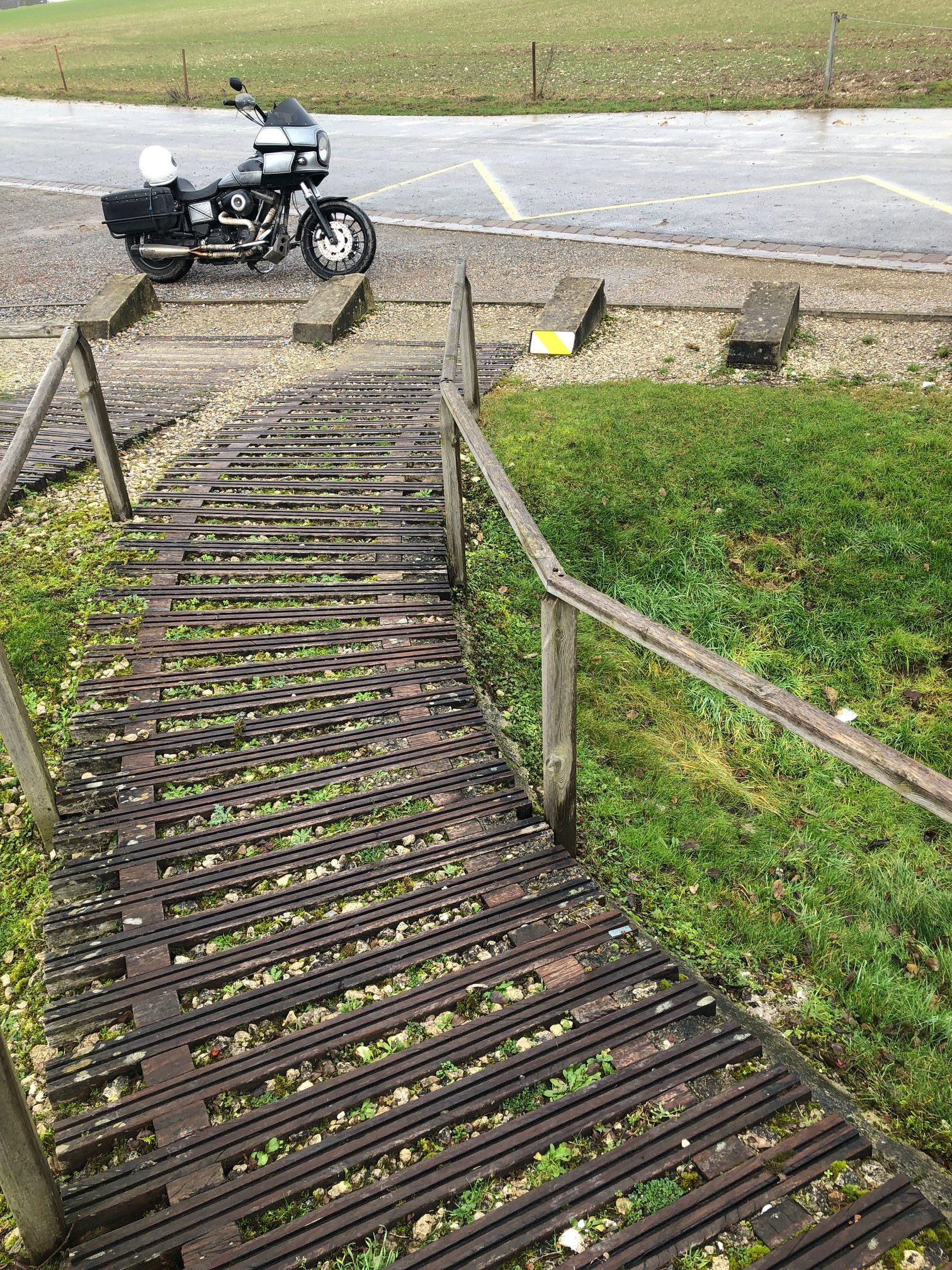 The Crater receives around 200.000 visitors a year and is one of the most visited sites on the Western Front. Lucky me, I was alone on the site this day. But the emotion was there for sure.
The Crater receives around 200.000 visitors a year and is one of the most visited sites on the Western Front. Lucky me, I was alone on the site this day. But the emotion was there for sure.
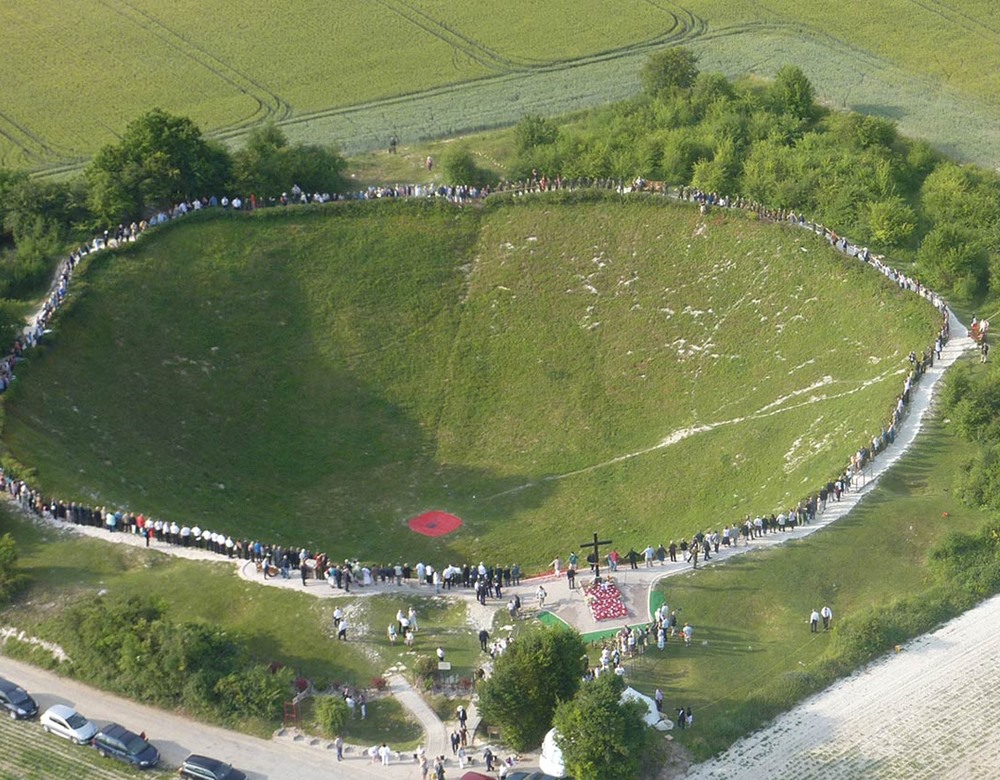 Once again it was a great ride which permit me to improve my general culture and pay tribute to the great History of Nations.
Once again it was a great ride which permit me to improve my general culture and pay tribute to the great History of Nations.
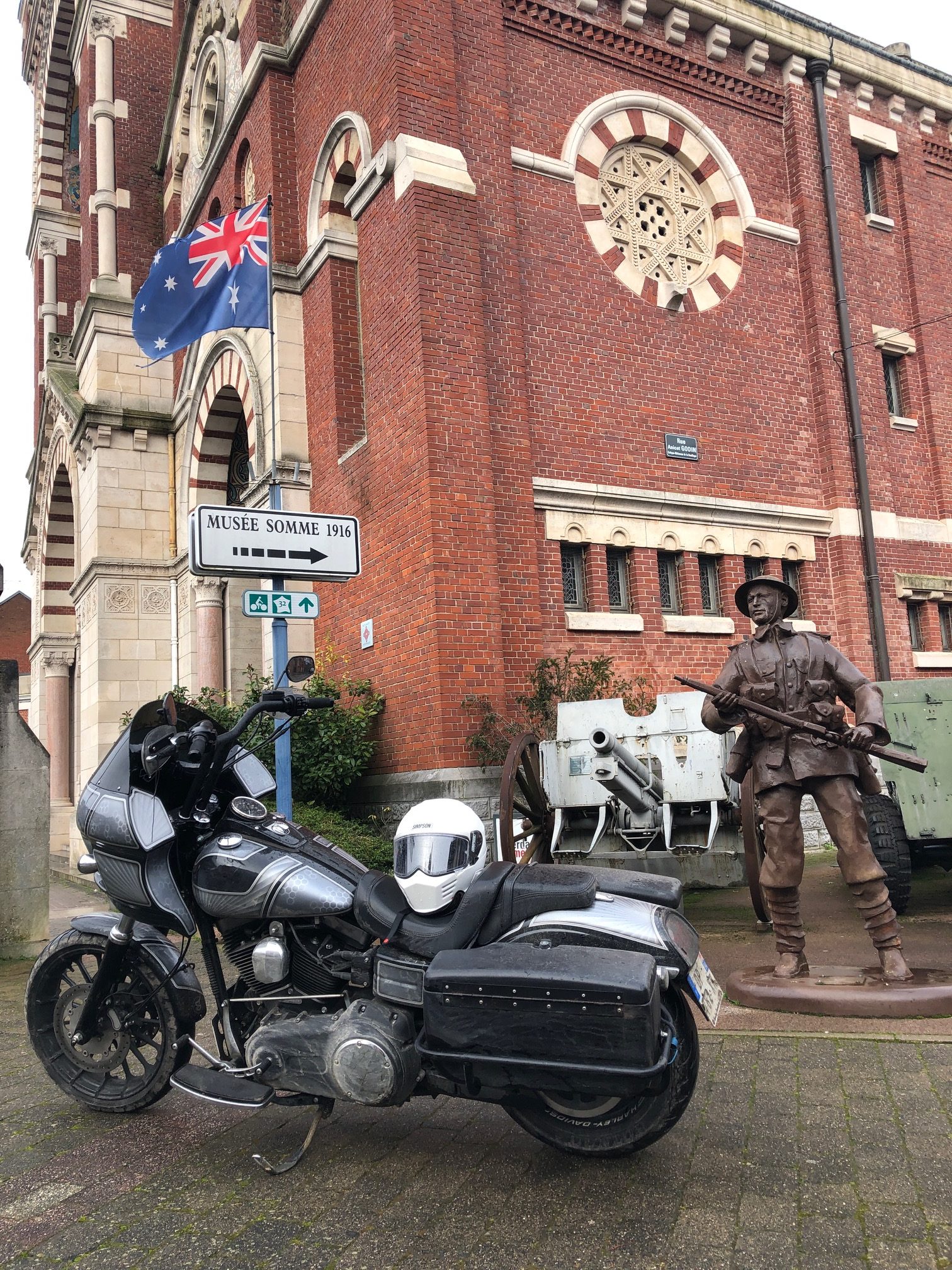 Hope I’ll have the chance to show you that place next time you will come to ride in France / Europe. But, don’t forget your rain suit …
Hope I’ll have the chance to show you that place next time you will come to ride in France / Europe. But, don’t forget your rain suit …
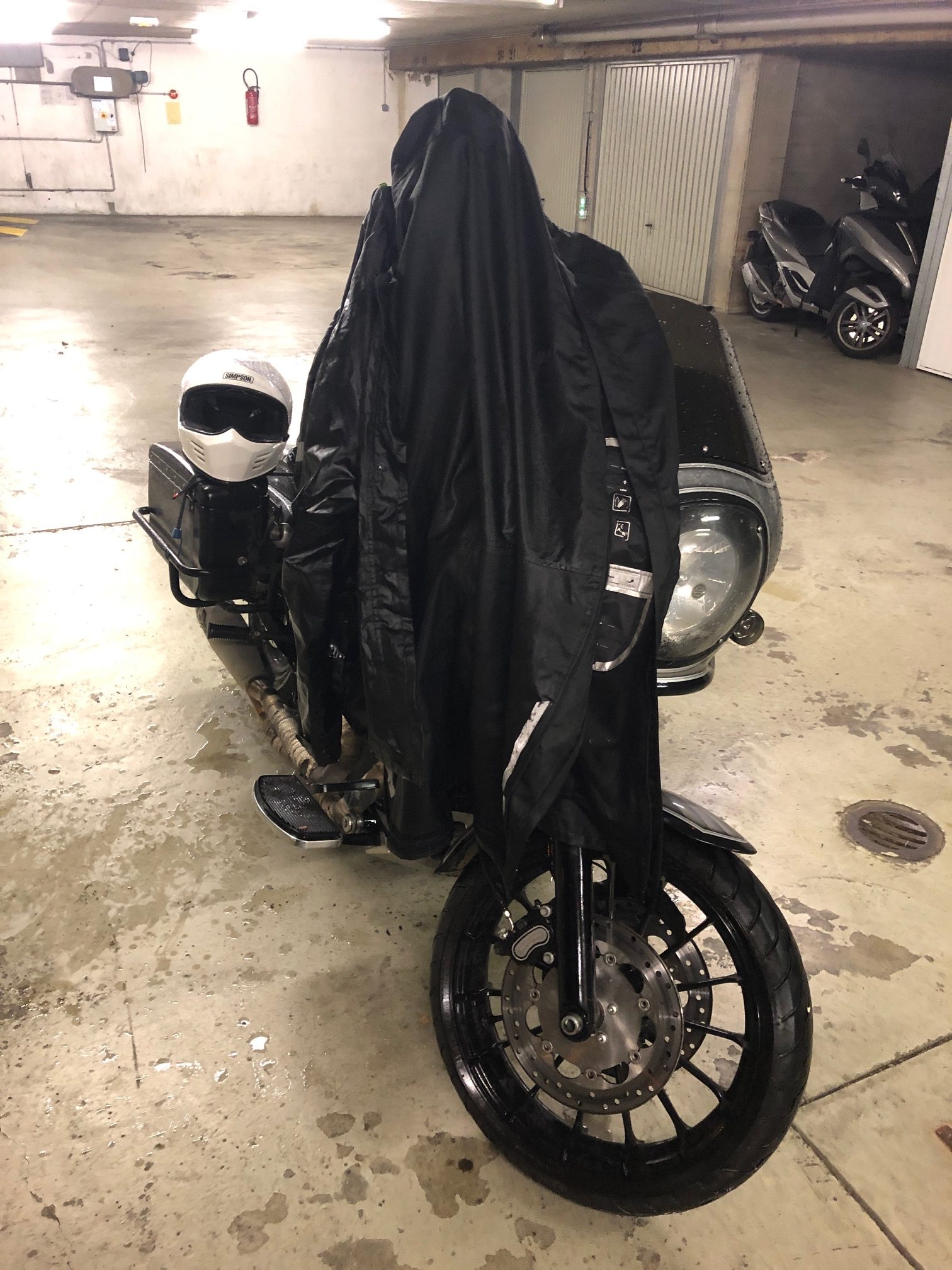 See ya soon on the road, who knows???
See ya soon on the road, who knows???
 Hervé, your French rider friend.
Hervé, your French rider friend.






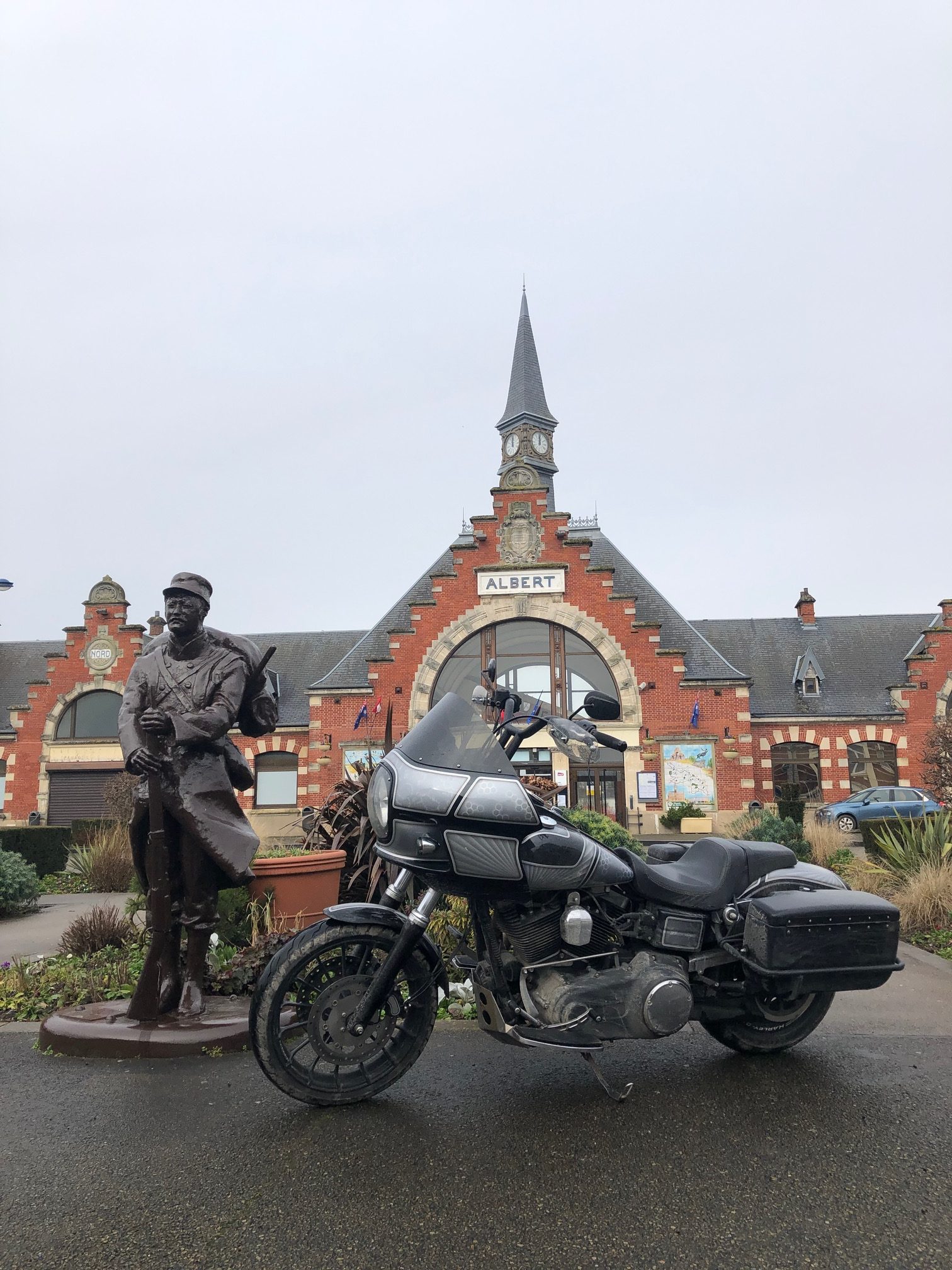
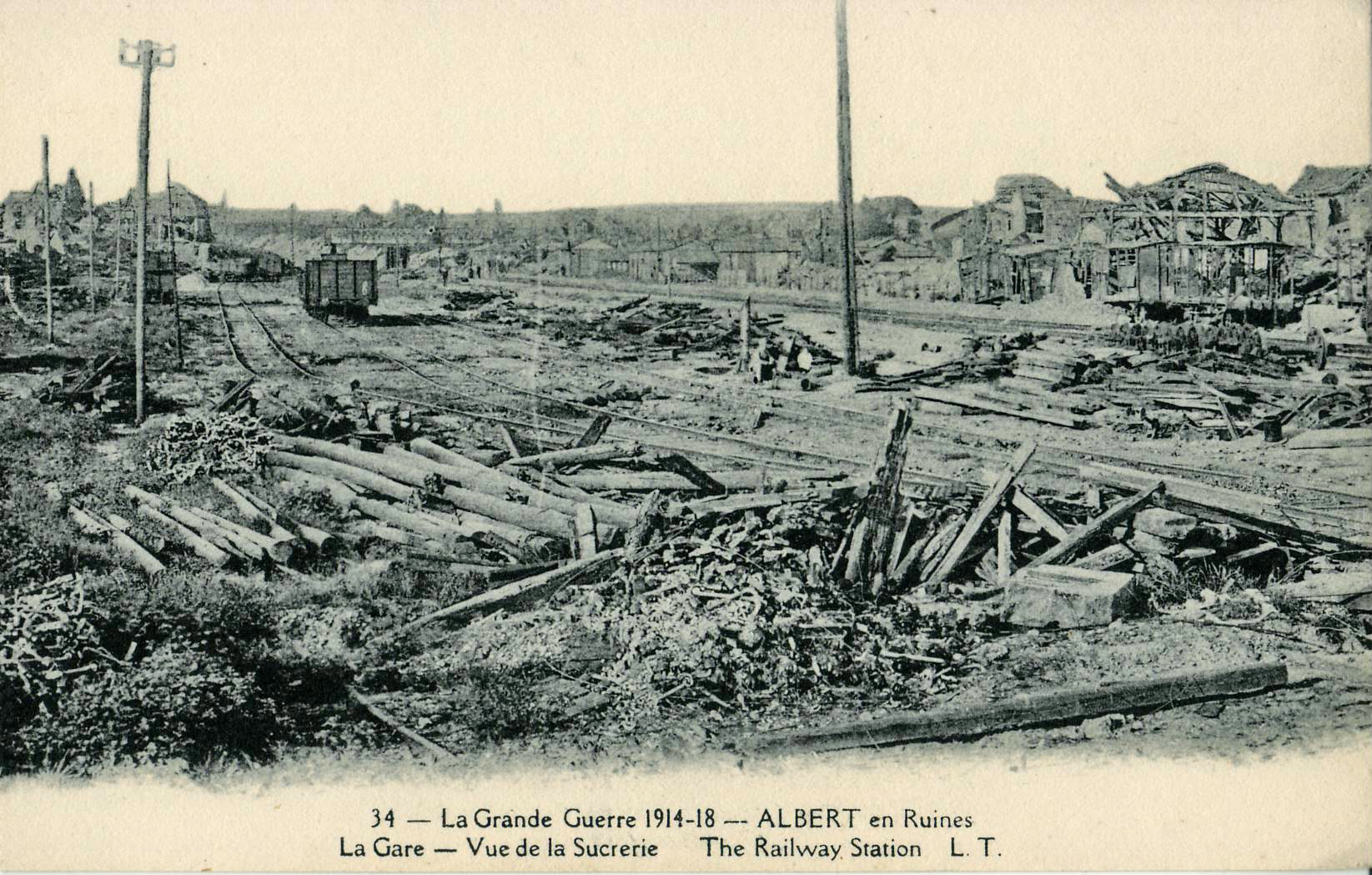
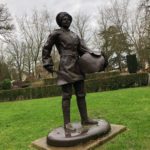

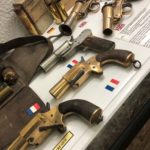
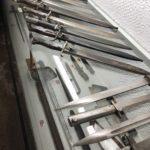
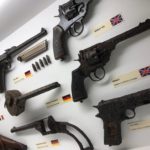
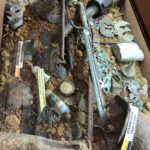
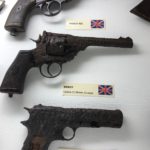
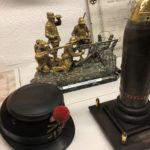
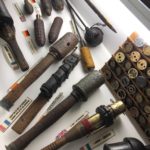
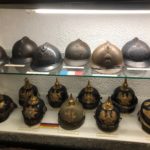

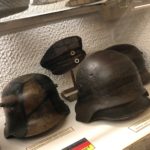
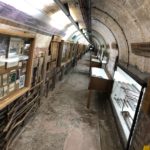
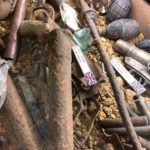
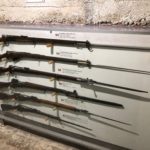
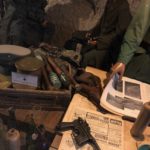
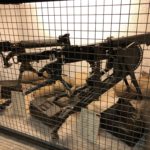
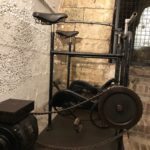

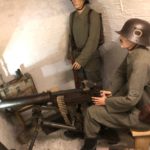
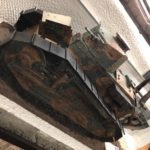
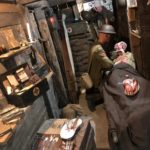
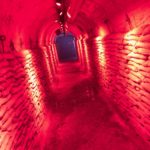
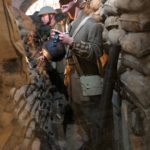
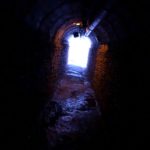

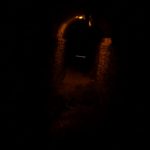

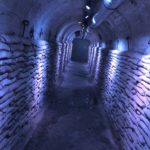

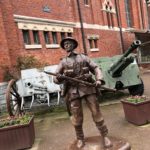
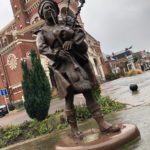
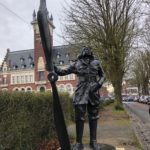
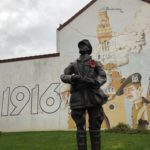




More Stories
RIDE TO THE GALLO-ROMAN SITE IN THE CENTER OF FRANCE
RIDE TO THE CASTLES
RIDE TO THE VALENCIA MARKET